The best espresso machine 2025: home coffee makers tested by experts
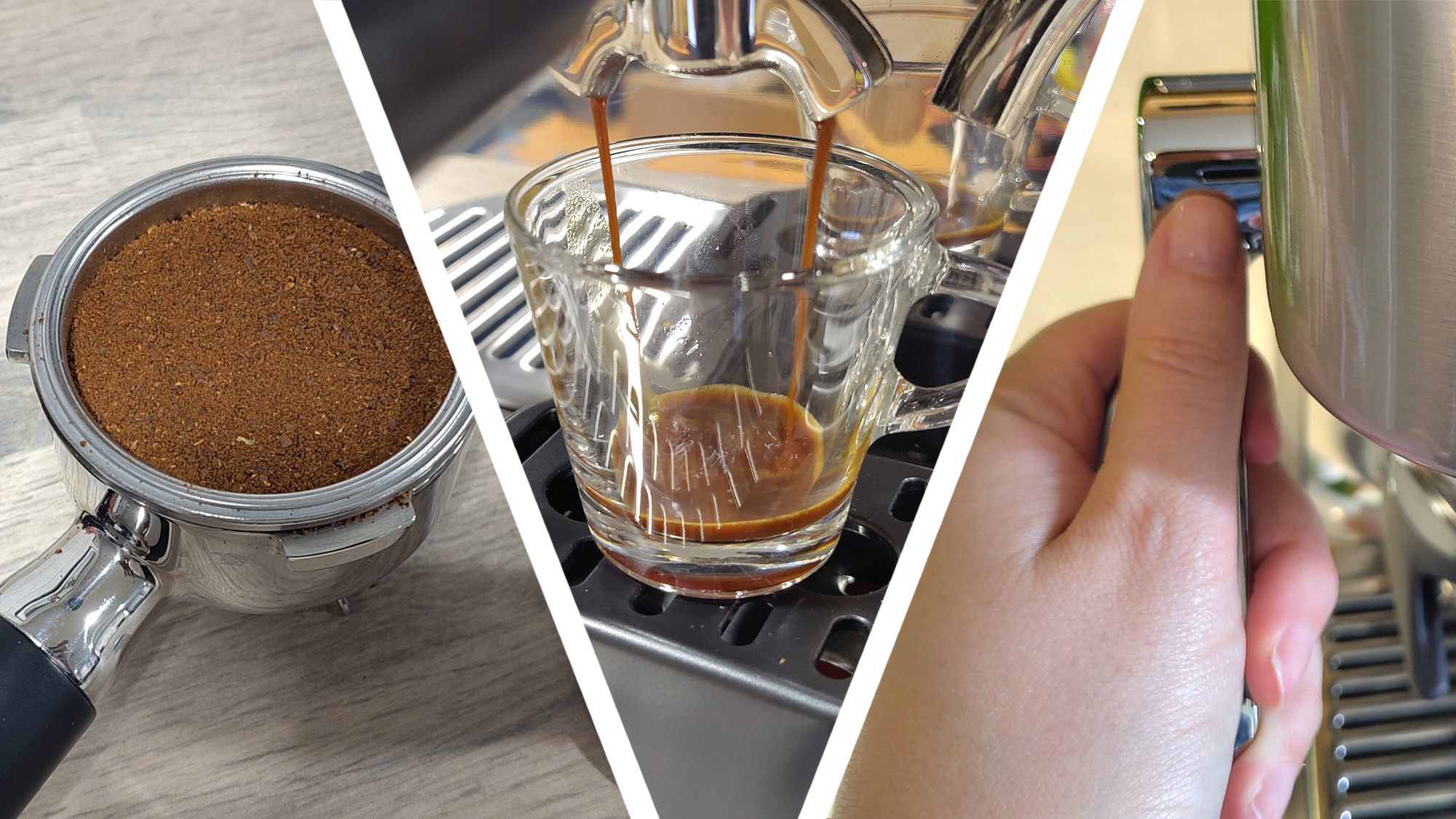
The best espresso machine can set you up for the day with a super-smooth hit of concentrated caffeine, without you even having to leave the house, and we've tested all the latest models from big brands like Breville, Gaggia, and De'Longhi to help you choose the right one for you.
There are all sorts of options out there if you're looking for the best coffee machine, but for many people an espresso maker is the only way to go. Whether you're looking for a fully manual coffee maker requiring maximum barista skills, or a more beginner-friendly bean-to-cup machine that grinds, brews, and steams at the press of a button, I've got the right one for you here.
When I test espresso machines, I check how quickly each one reaches temperature, the quality of the portafilter (or brew group for a bean to cup machine), the type of grinder and the number of settings, the quality of the steam wand, the volume of the machine in decibels, number of drink profiles, customization options, and much more. Most importantly, I look for consistency, so you can be confident that your coffee will always taste perfect.
I've also included video clips where possible so you can see exactly what it'll be like to use each espresso machine in your own kitchen.
The latest addition to the guide is the De'Longhi Dedica Duo – an entry-level espresso machine with a budget-friendly price, consistent performance, and the ability to extract cold espresso as well as hot.
The quick list
Below is our quick guide to the best espresso machines around. Use it to narrow down your options, then either hop down to the more in-depth entry, or head straight to a retailer to buy.
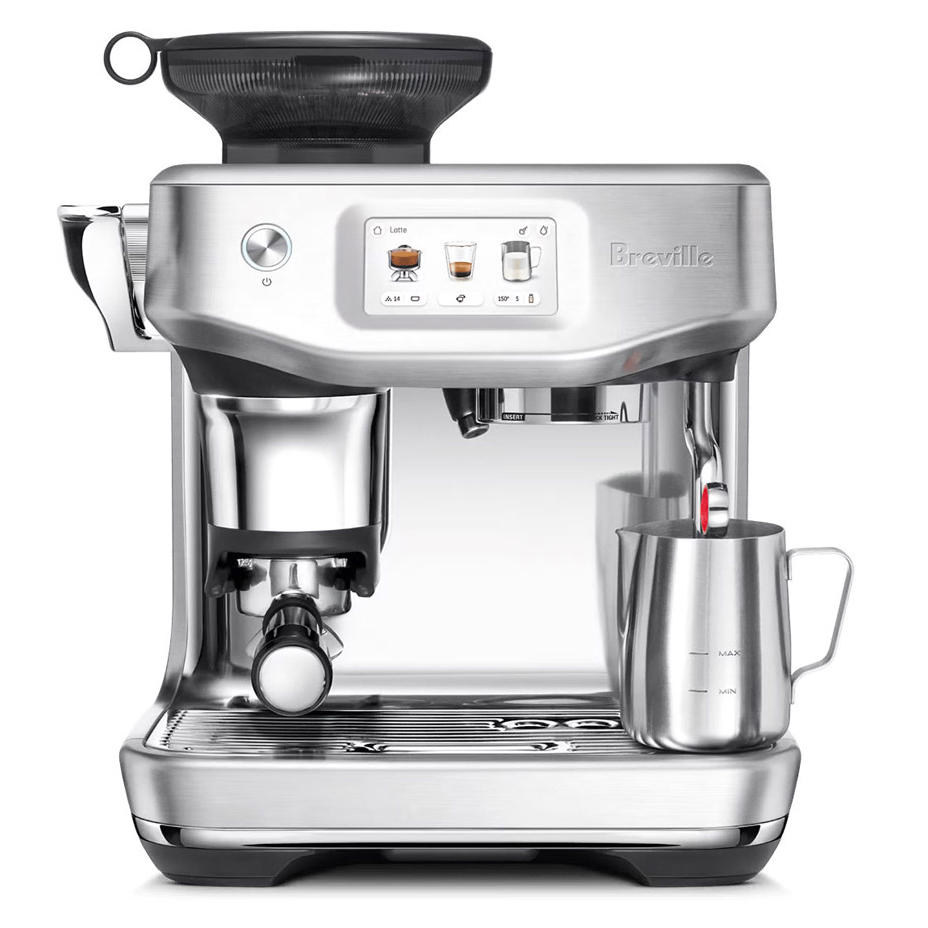
Best espresso machine overall
This incredible automatic coffee machine makes it easy for anyone to make café-quality espresso with no experience, thanks to automated grinding, dosing, tamping and milk frothing. We spent two months testing it, and were thoroughly impressed by the quality and consistency of its creations, which rival those than an experienced user could get from a fully manual machine. For us, it's the best espresso machine you can buy today.
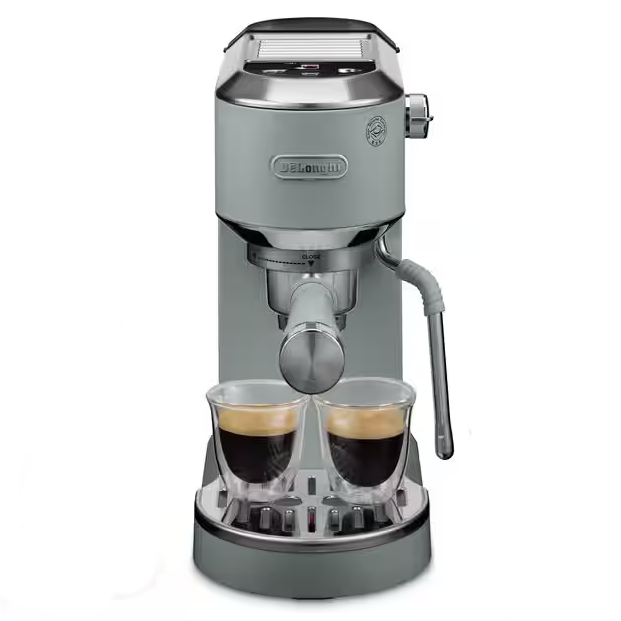
Best budget espresso machine
The De'Longhi Dedica Duo is easily the best budget espresso machine you can buy right now, and during my tests it proved far more reliable than others in the same price bracket. It's super compact, but solidly built, and its boiler can maintain the pressure necessary for consistently well-extracted shots. It can even brew cold-extracted espresso for iced drinks.
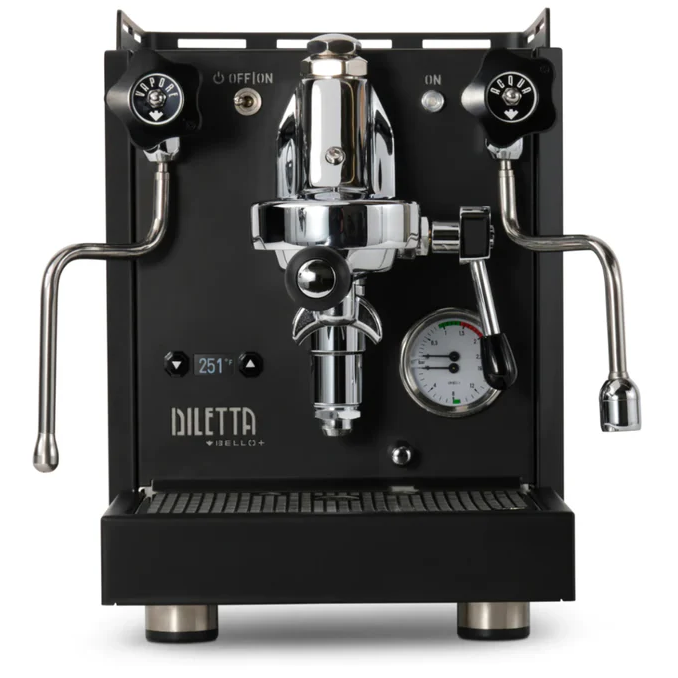
Best manual espresso machine
If you're happy wielding a steam wand and portafilter, this barista-quality unit is the best espresso machine for you. Its build quality is second to none, and our tester reported that it turned her morning coffee-making routine into a luxurious, meditative experience. She was also surprised by how easy it was to use, and with a little practice she was able to pull perfectly extracted shots every time. The biggest drawback is that it's only available in the US.
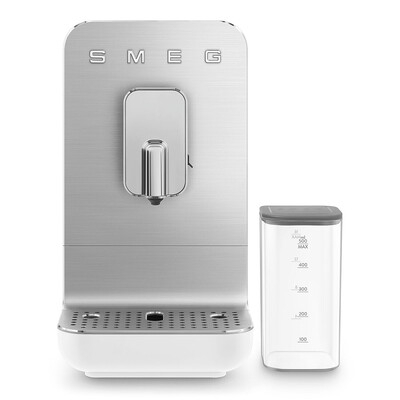
Best automatic espresso machine
Smeg's latest espresso machine handles the whole coffee-making process for you, from measuring and grinding the beans to frothing milk. During testing we found it a pleasure to use each morning, and a cinch to keep clean, making it a great option if you want consistently tasty, well extracted espresso drinks with minimal hassle. It looks stunning as well, thanks to Smeg's signature Italian design.

Best small espresso machine
Pressed for space? The Breville Bambino Plus is an extremely compact espresso machine. While it's small in size, it's big on features, and our reviewer was very impressed by both its manual and automatic brewing functions: "It took 21 seconds to brew a shot of espresso, and the coffee was wonderfully smooth, with a fantastic thick crema on the top."

Best espresso machine for beginners
This is the espresso maker I have at home, and it's refreshingly simple to use if you're looking for your first manual machine. Although it only has a single boiler, it generates enough pressure for well brewed coffee and perfectly steamed milk (dairy or plant-based). A fun way to get into espresso, it gives you full control over every part of the process so you can fine-tune your technique to suit your personal tastes.
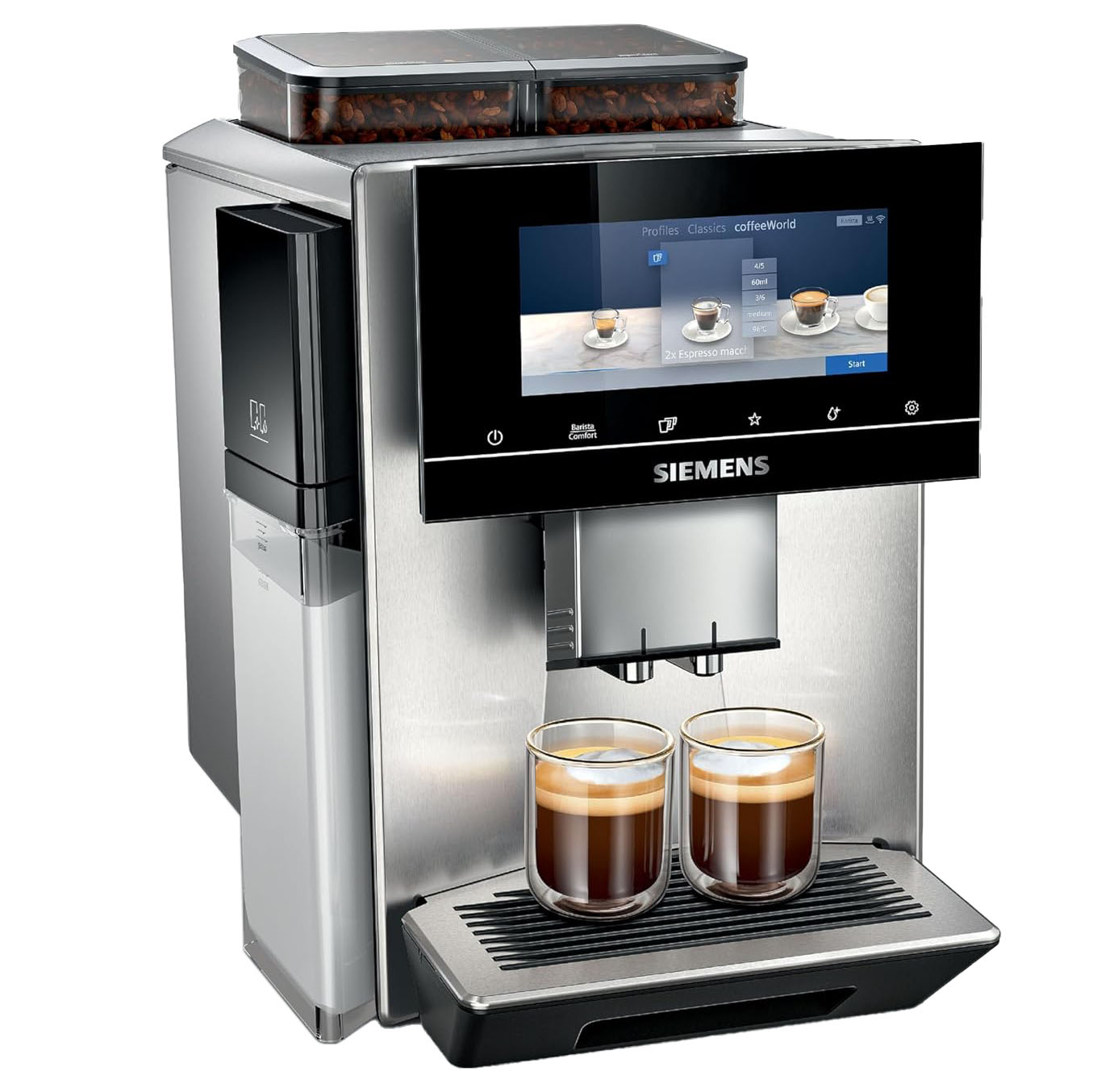
Best espresso machine for lattes
If you enjoy a good latte, cappuccino, or macchiato, but you don't want the hassle of a steam wand, this is the espresso machine for you. It produces the best milk foam of any automatic espresso machine I've tested to date, with sweet, creamy, stable foam. It's pricey though, and if you don't mind foregoing the smart cleaning system, the standard Siemens EQ900 gives you the same coffee for considerably less cash.
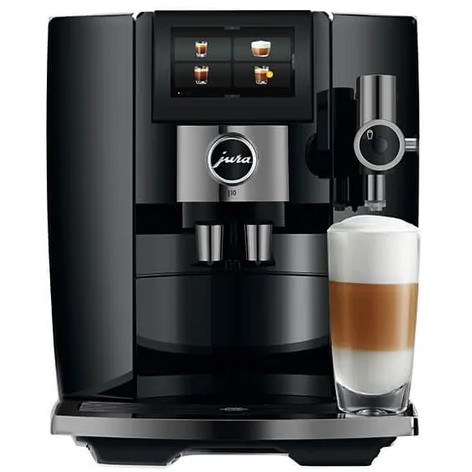
The best espresso machine for flavored coffee
The Jura J10 is a feature-packed machine that not only brews an excellent espresso the traditional way, but can also recreate a very good cold brew by pushing pulses of water through your freshly ground coffee beans, resulting in a flavor profile very similar to coffee brewed overnight. The J10's Sweet Foam system is a winner too, infusing your choice of syrup into the milk as it's texturized.
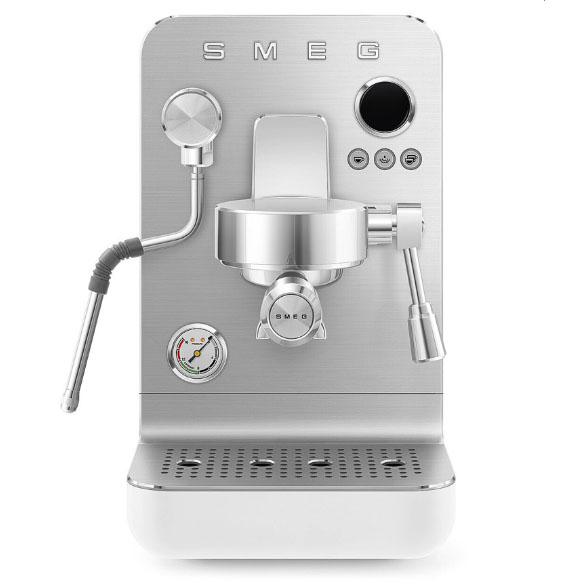
Best espresso machine if money's no object
This luxury manual espresso machine gives you a choice - either brew a coffee using the single or double-shot buttons, or use the smooth-feeling lever to pull a shot manually. During tests it performed brilliantly both ways, and its steam wand is one of the best I've tried, though you'll pay a premium for its stunning design.
Meet the expert

Cat has been a tech journalist for over 10 years and is an SCA-certified barista, so you can trust her to recommend the very best espresso machine for your kitchen. Whether you're looking for a manual machine or something fully automatic, she's got you covered.
The best espresso machines
Why you can trust TechRadar
The best espresso machine overall
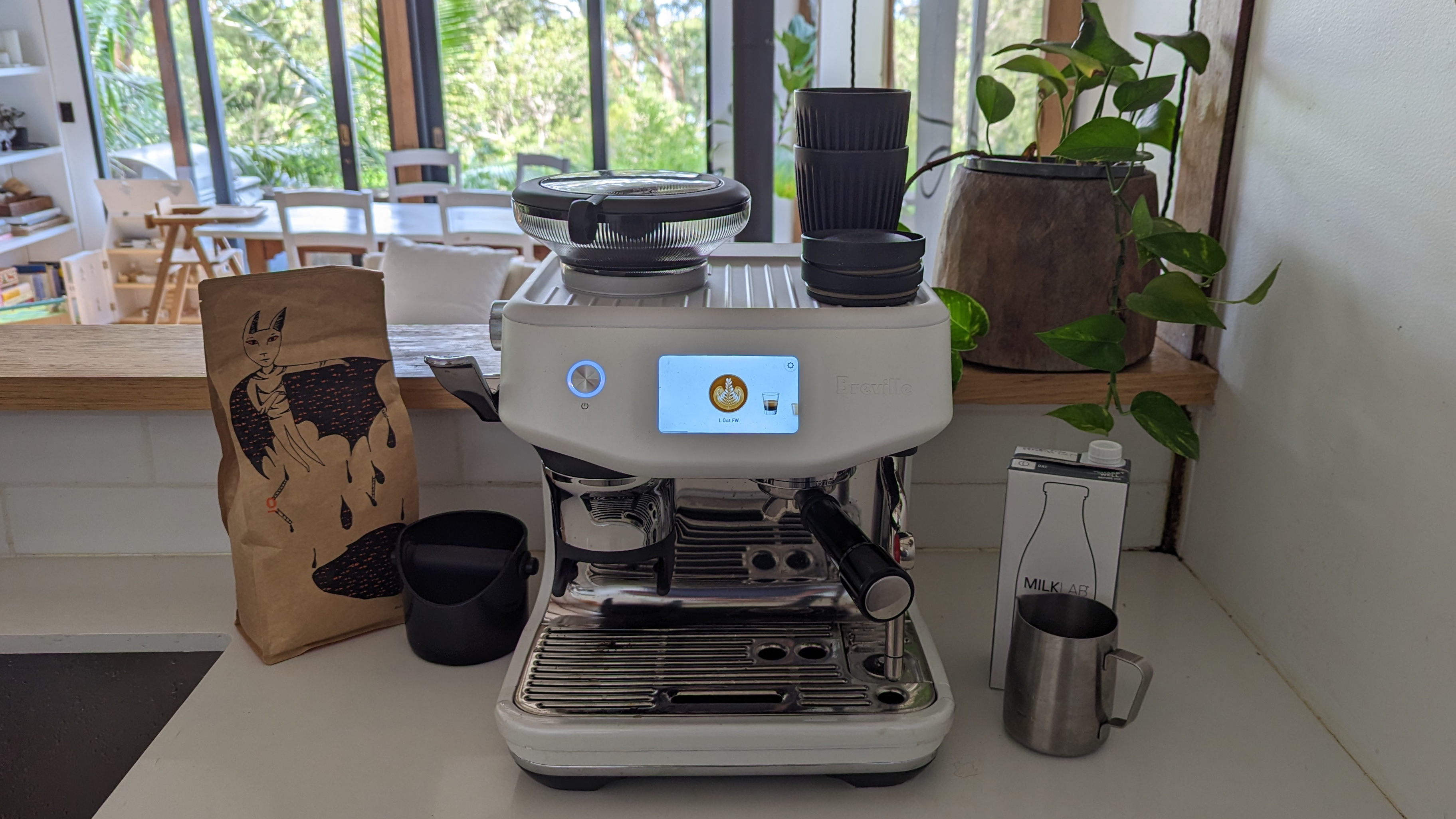
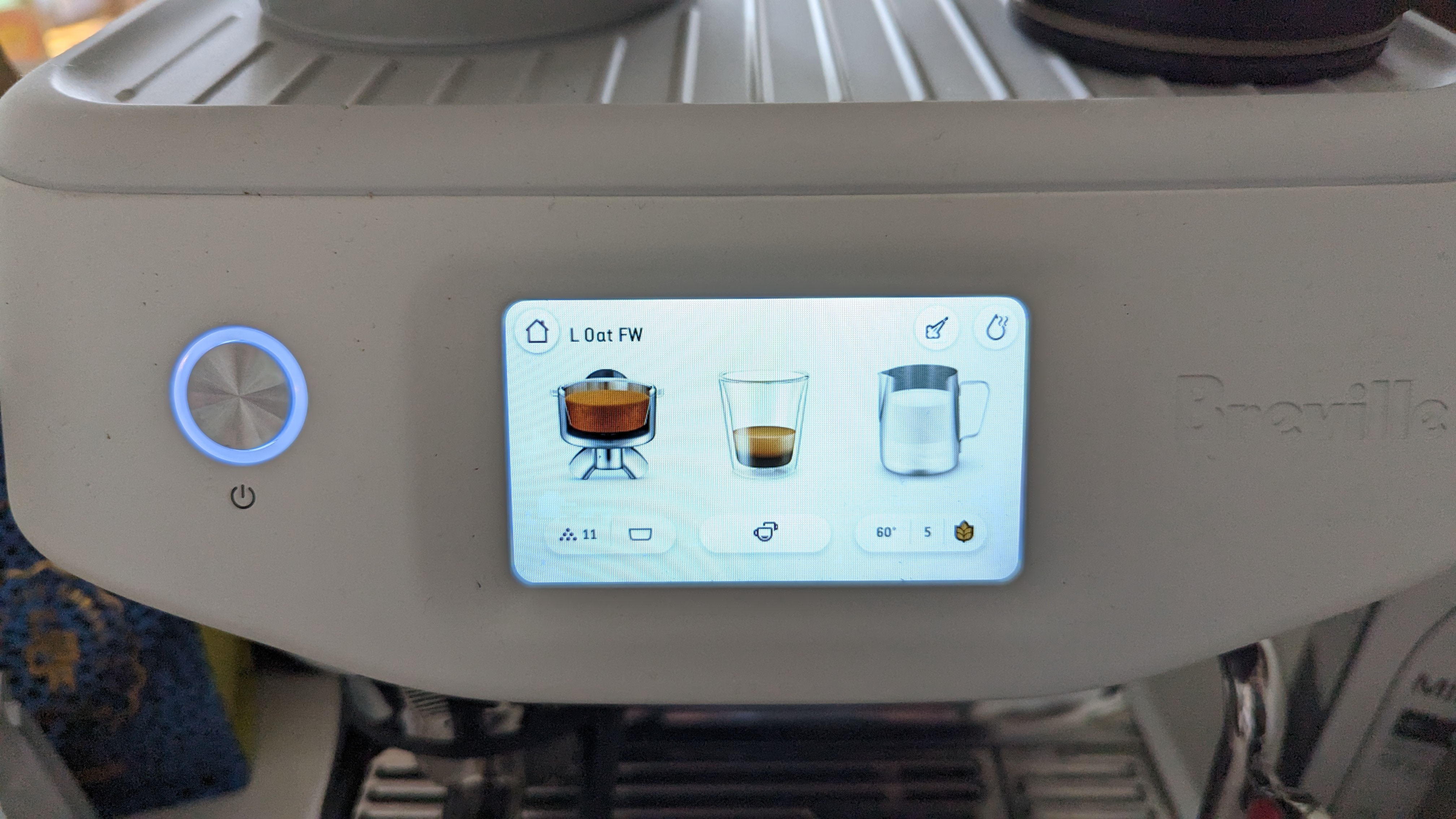
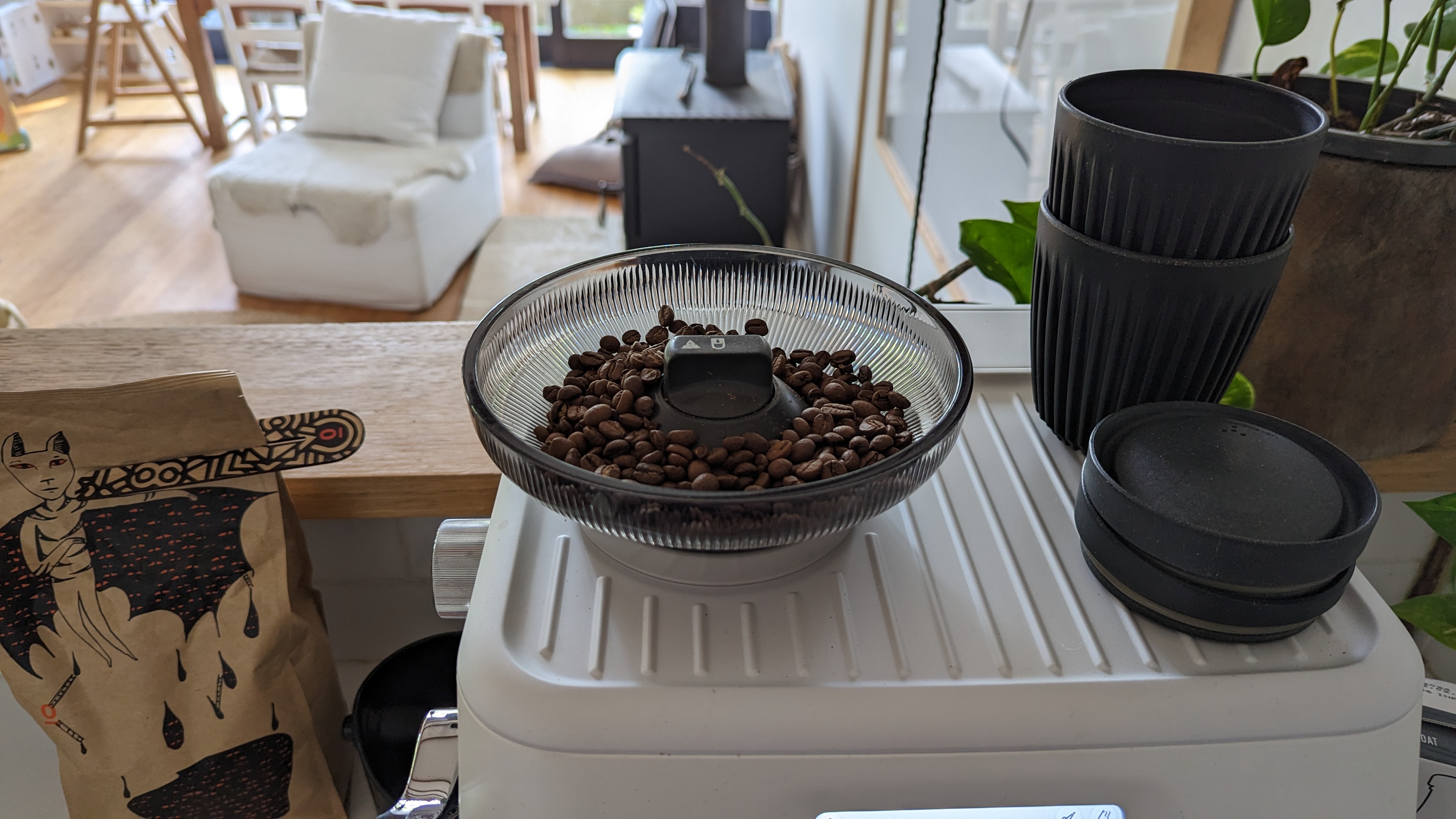
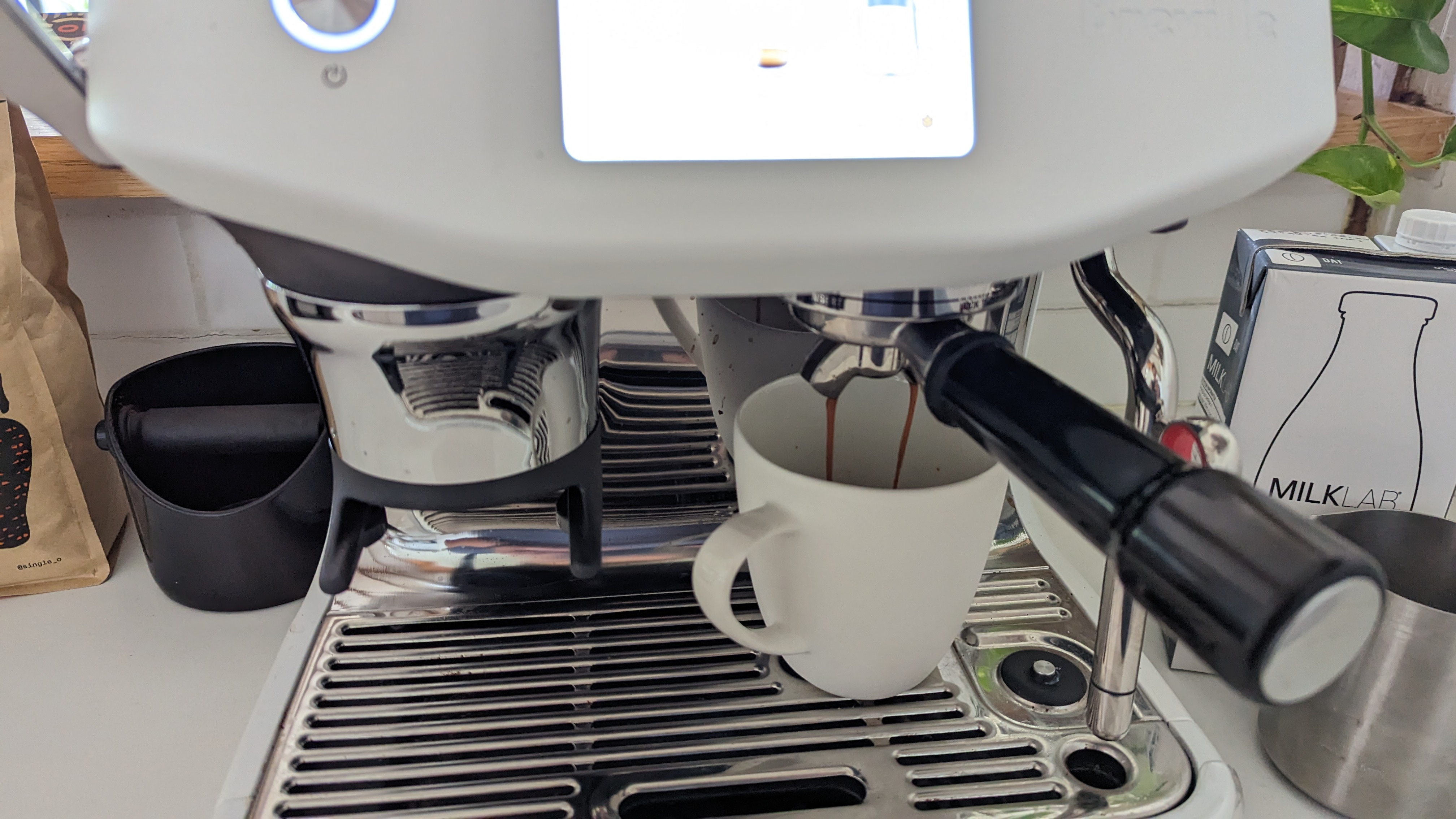
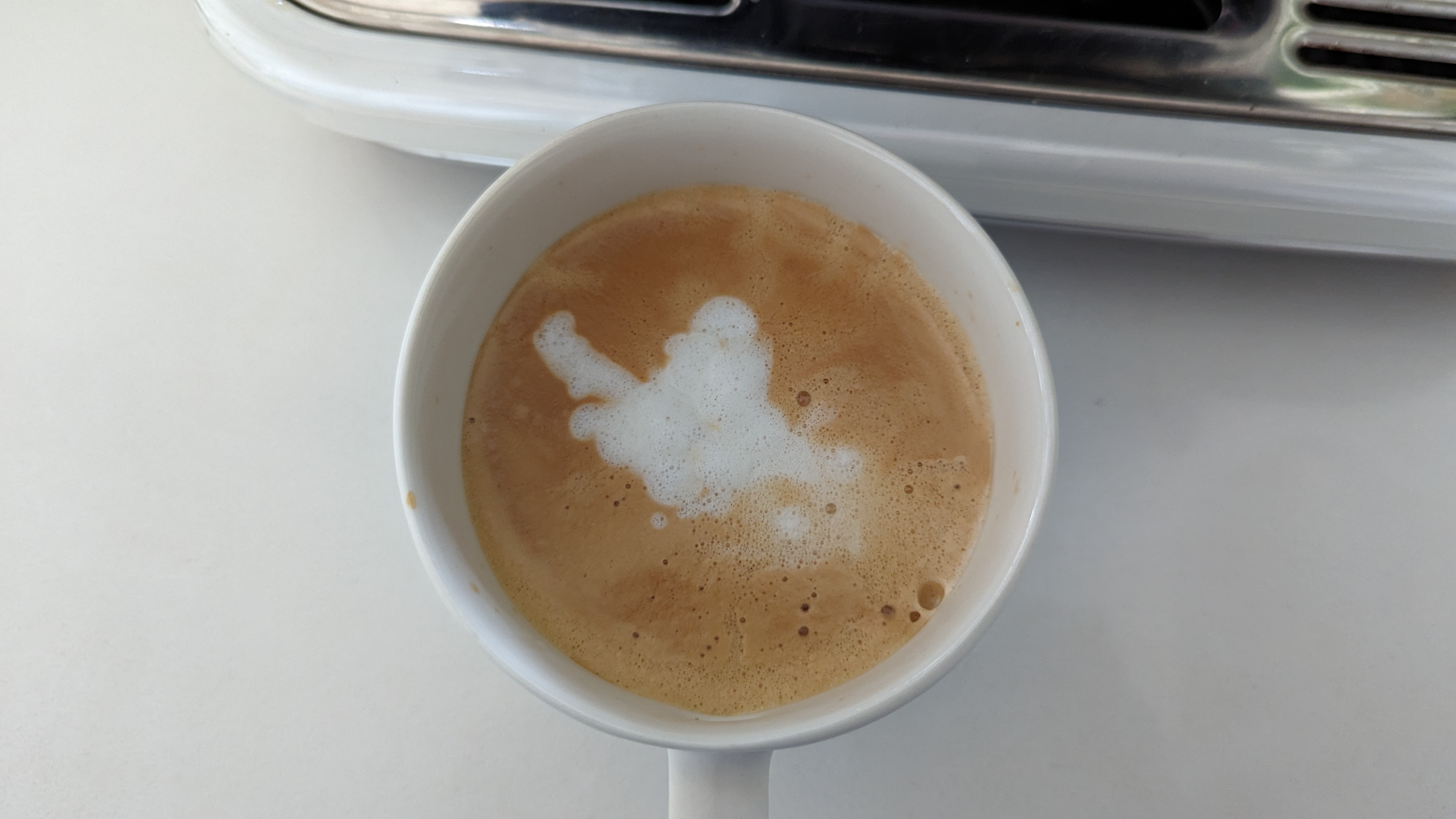
Specifications
Reasons to buy
Reasons to avoid
✅ You want great value: Very few fully espresso machines offer this many features for such a reasonable price.
✅ You value simplicity: This machine handles all the trickiest parts of brewing consistently great espresso for you.
❌ You're comfortable with a manual machine: If you don't need automation, you can get a top-quality manual espresso machine for a fraction of the price.
❌ You regularly use plant-based milk: The AutoMilQ system worked best with dairy milk during our tests.
There's a bit of an expectation when it comes to espresso machines that if you want the absolute best results, you need to learn the ways of the barista. However the Breville The Barista Touch Impress (sold in the UK as the Sage The Barista Touch Impress) is one mighty exception to this rule, and right now we think it's the best espresso machine you can get.
It's one of Breville's most advanced espresso machines, guiding you through all the most difficult aspects of using a manual coffee machine. It combines features from our previous top pick, the Barista Express Impress, such as the compact integrated grinder, assisted tamping and auto-dosing, with the Barista Touch's touchscreen and automatic milk frothing, to make a brilliantly user-friendly (and surprisingly compact) expresso machine that gives incredible results every time.
Our reviewer spent two months testing the Barista Touch Impress and came away suitably, well, impressed. For novices it'll automatically take care of the entire process as well as enabling you to save your favorite settings for instant access, while those with barista skills will fined it easy to take more control of the process to achieve better results – you may find it harder than you'd expect to beat the Barista Touch Impress's own output, though.
Read our full Breville The Barista Touch Impress review
Attribute | Notes | Rating |
|---|---|---|
Value | Expensive, but competitive for automatic | 5/5 |
Design | Compact, great color options, good user interface | 5/5 |
Performance | Great and easy espresso, impressive automatic milk, easy to clean and use | 5/5 |
The best budget espresso machine
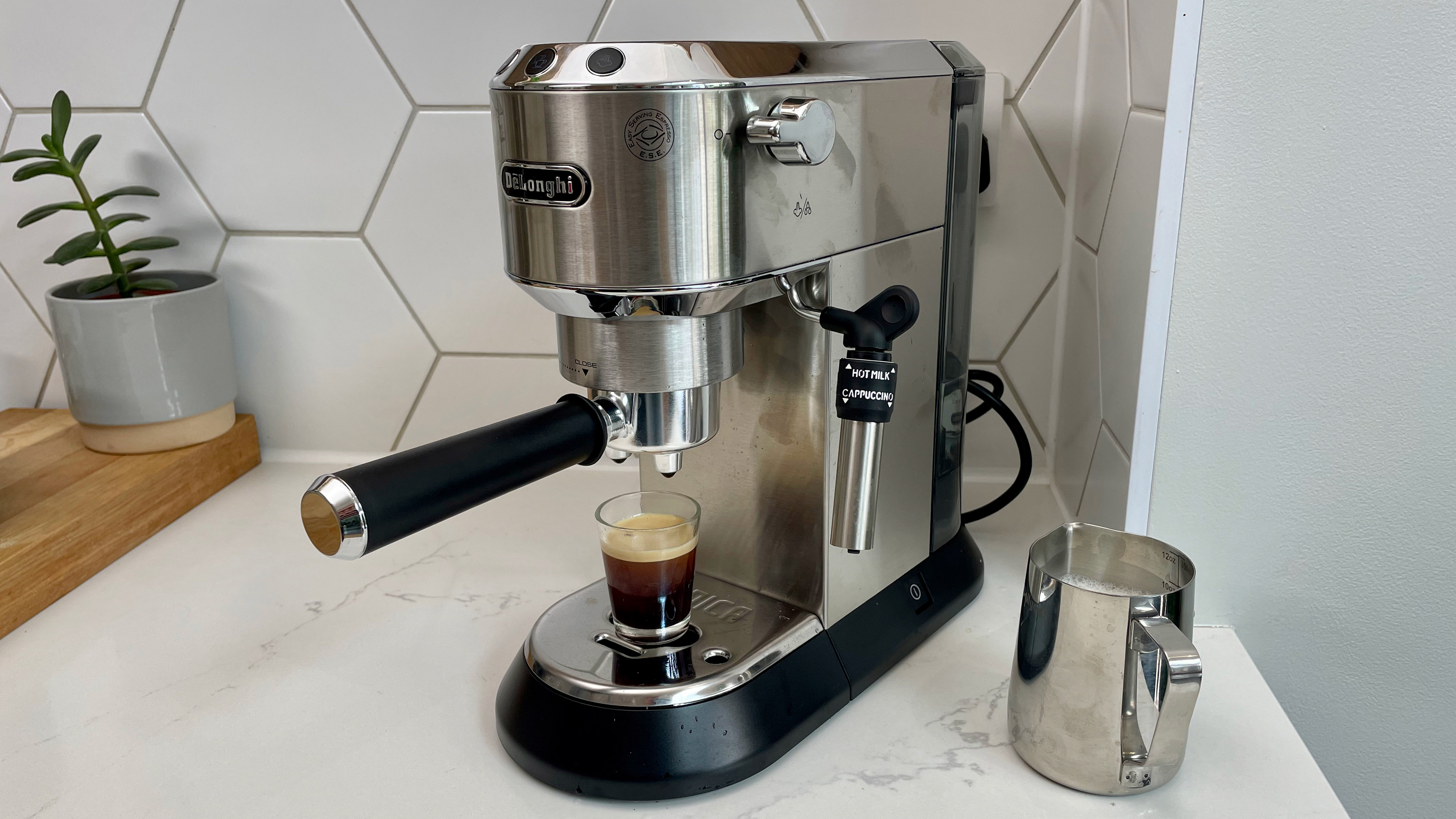
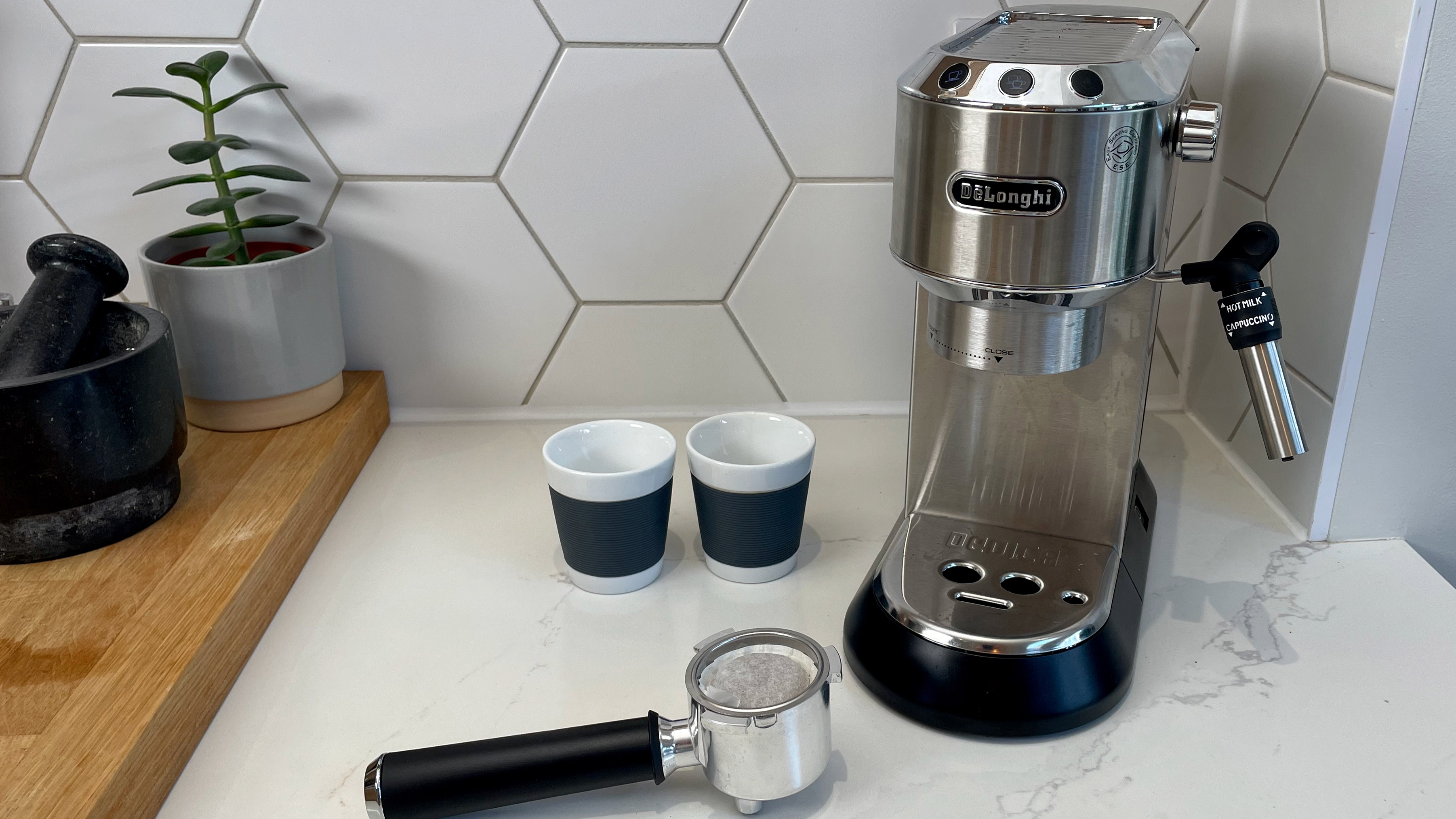

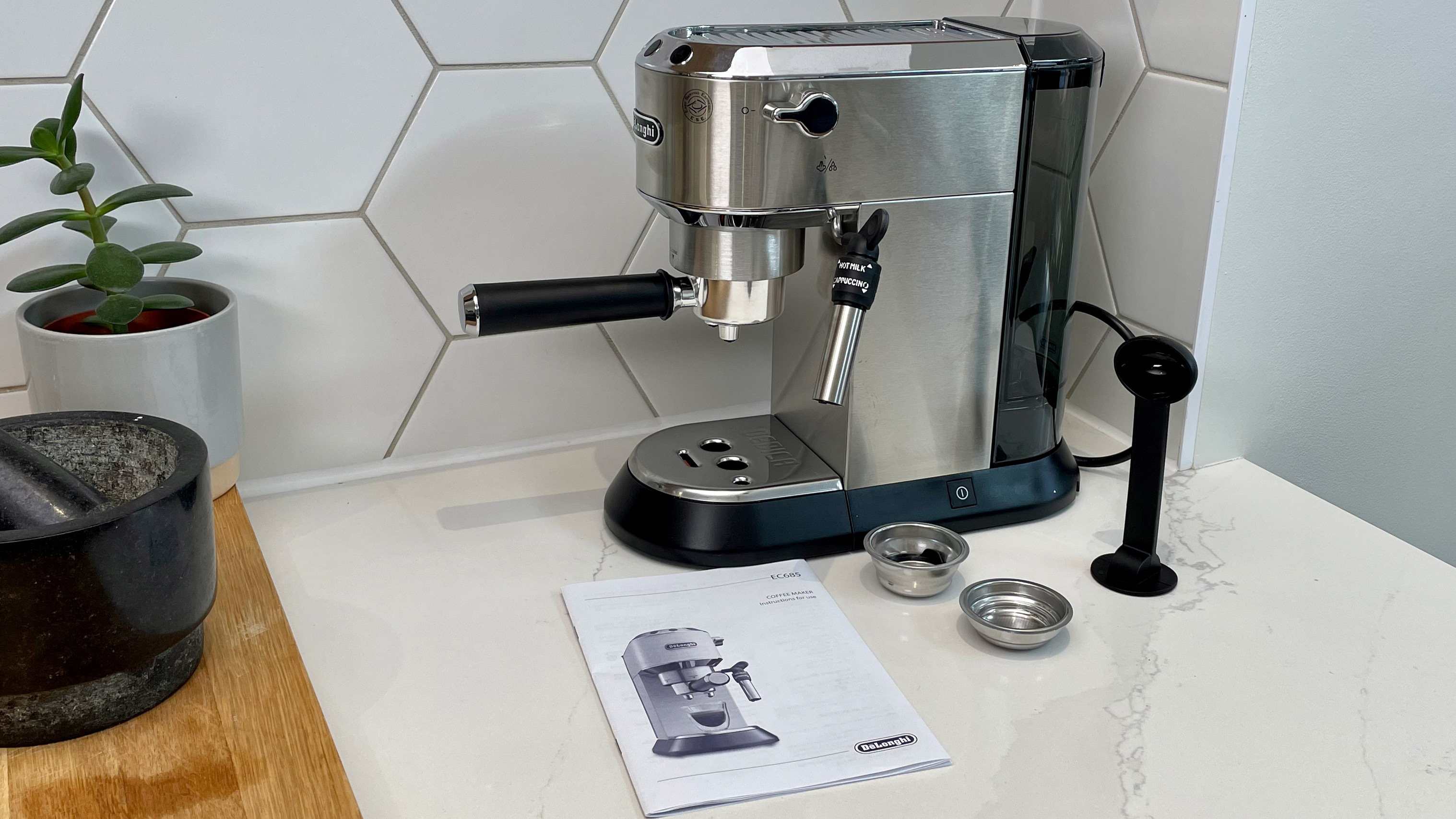
2. De'Longhi Dedica Duo
Our expert review:
Specifications
Reasons to buy
Reasons to avoid
✅ You're short of counter space: Measuring just 5.9in / 14.9cm wide, this is the ideal espresso machine for smaller kitchens.
✅ You're on a budget: This is one of the most affordable espresso machines we've tested, but it doesn't skimp on features or performance.
❌ You want a built-in bean grinder: Bean-to-cup espresso machines are expensive, so we'd suggest buying a separate grinder.
❌ You want pre-programmed settings: This machine gives you a few options (such as temperature), but the rest comes down to your technique.
The De'Longhi Dedica Duo is the best budget espresso machine I've tested this year, and blows most other sub-$300 alternatives out of the water. De'Longhi has a reputation to maintain, and hasn't skimped on components or features. Despite its entry-level price, this little machine feels solidly made, and performs reliably. It heats quickly, its pump is capable of sustaining the pressure you need to get consistently well-extracted coffee, and its steam wand is excellent.
The Duo is an updated version of the De'Longhi Dedica Style, with a more modern look and useful tweaks like a wider drip tray that lets you fit two espresso cups underneath more easily (thank you, De'Longhi). The main change, however, is a new cold-extraction option, which takes longer than pulling a shot of hot espresso (a couple of minutes rather than 38 seconds), but produces a smooth-tasting drink that's a great foundation for iced drinks and cocktails.
I've been very impressed during my tests. My only quibble is that the machine tends to drip a little after the pump has stopped, but I definitely don't think that should be a deal-breaker.
Read our De'Longhi Dedica Duo hands-on
Attribute | Notes | Rating |
|---|---|---|
Value | Very reasonably priced, and much better made than other espresso machines in this bracket. | 5/5 |
Design | Slim and compact, with an updated look and several fun color options. | 5/5 |
Performance | Simple settings for coffee and milk preparation make it easy for even new users to achieve consistent results. | 5/5 |
The best manual espresso machine
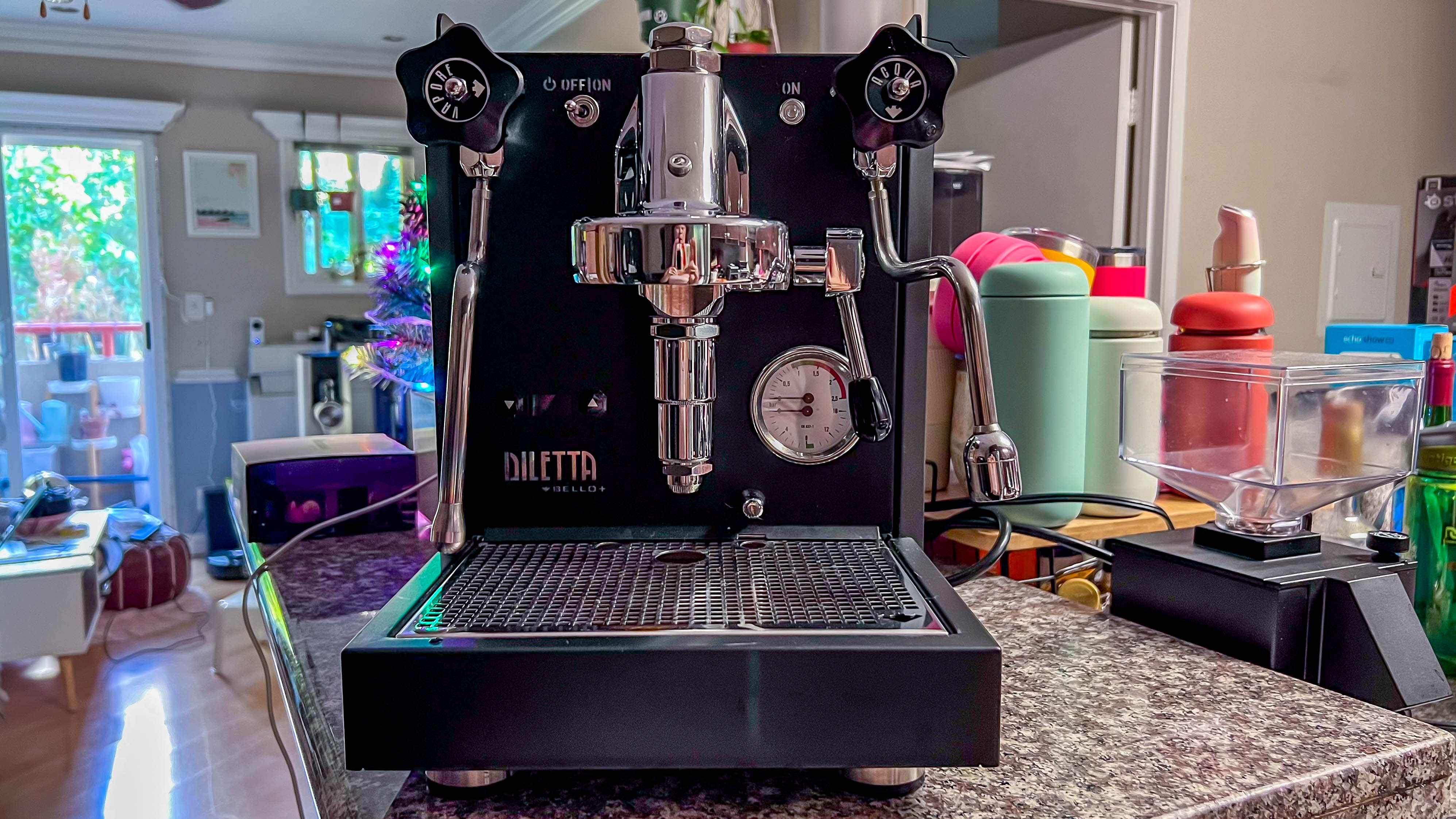
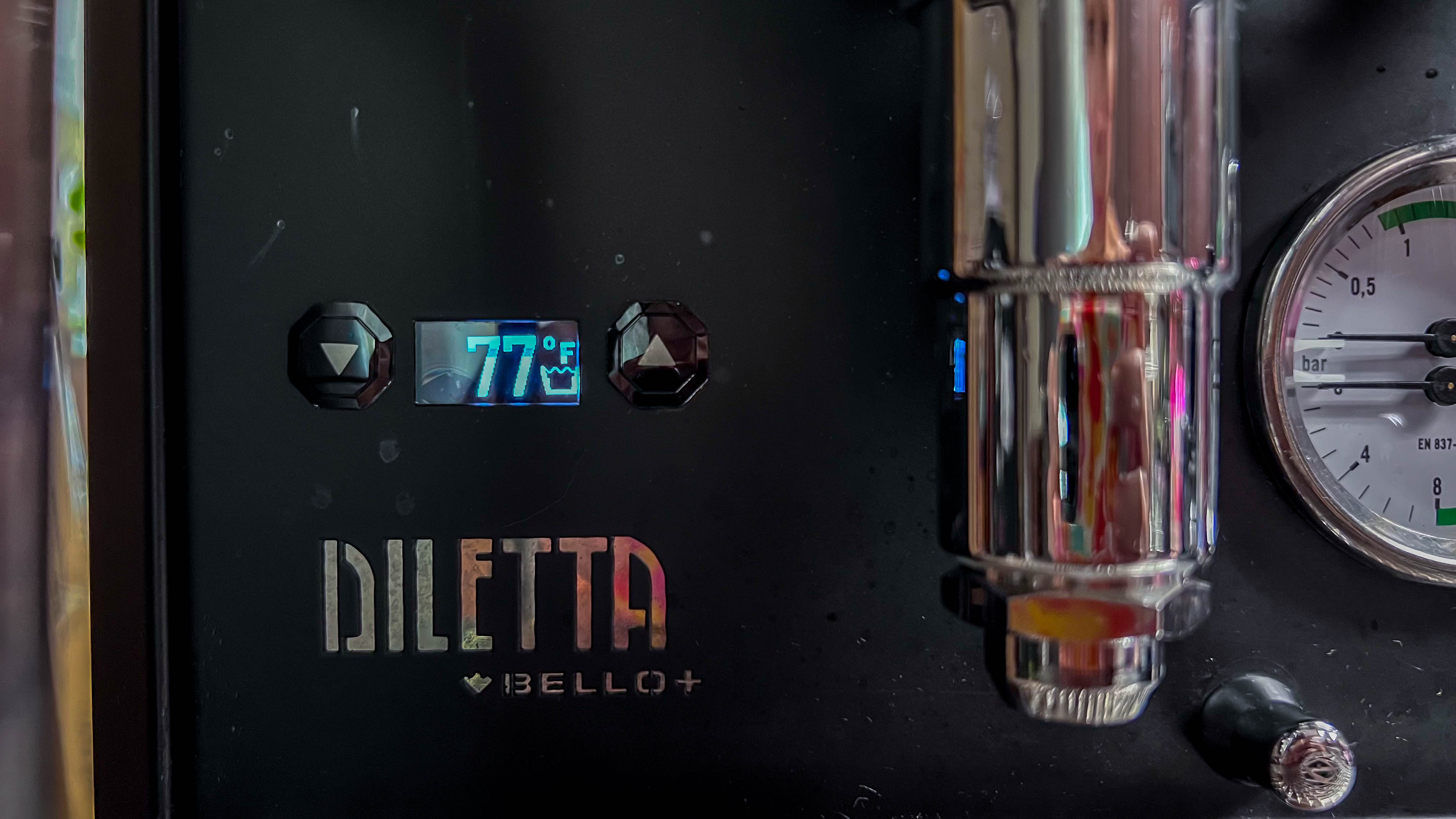
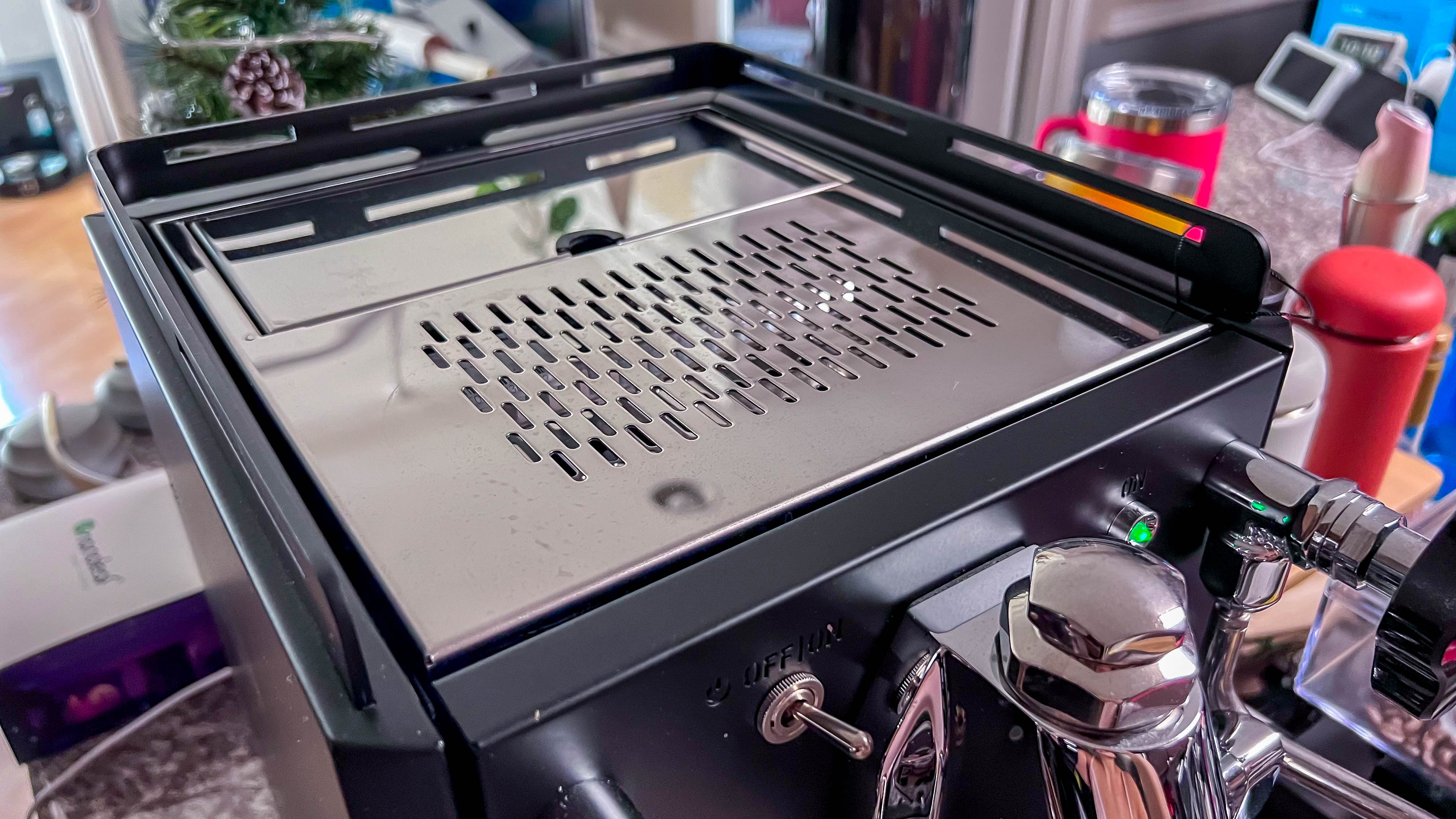
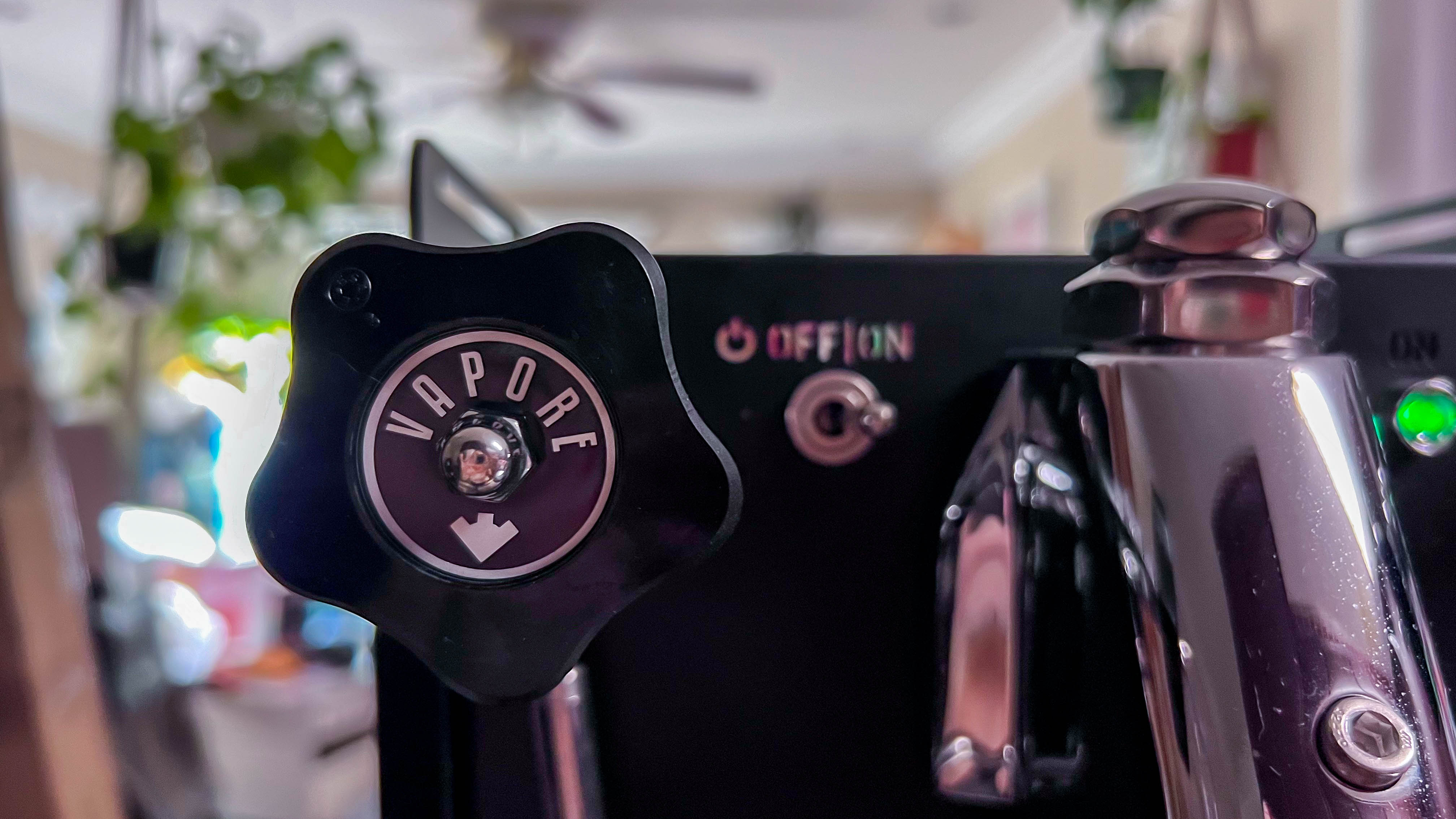
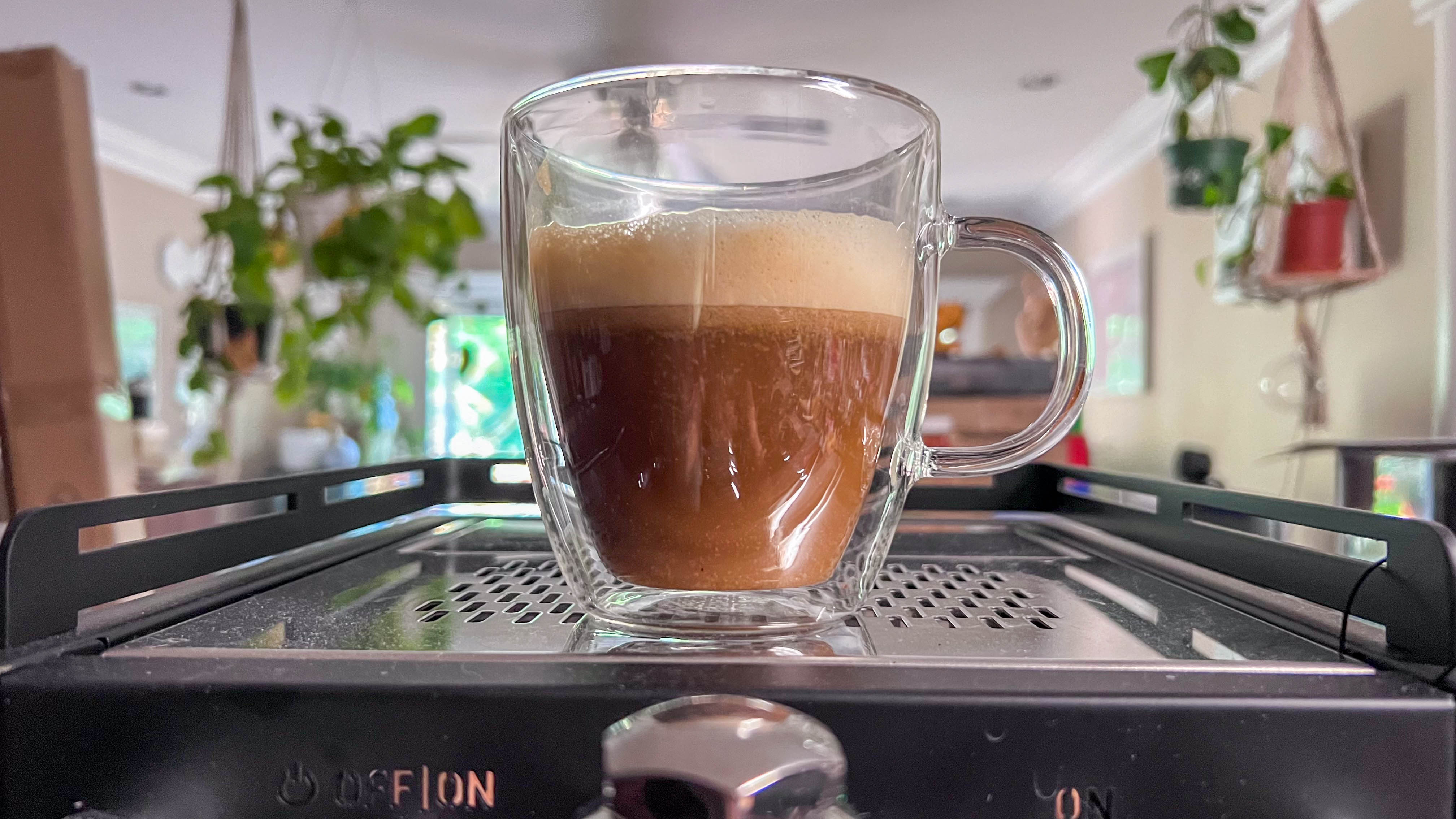
Specifications
Reasons to buy
Reasons to avoid
✅ You want a slower morning routine: Making coffee with this machine is a thoughtful, meditative experience.
✅ You have the money: This is a premium espresso machine, with a price tag to match.
❌ You're in a hurry: During testing we found this machine's boiler relatively slow to reach temperatures.
❌ You're not in the US: Sadly this excellent espresso machine isn't available internationally.
The Seattle Coffee Gear Diletta Bello+ is a new winner of our best manual espresso maker recommendation. It's expensive, which is why we don't recommend it for everybody, but it's very impressive.
An upgraded version of the original Diletta Bello, it includes extra features like a shot timer so you can check that your espresso isn't under- or over-extracted, a programmable pre-infusion mode, and an eco-mode for faster heating. This last point is particularly welcome, because the original machine took quite a long time to get up to temperature.
During testing, we found that the Diletta Bello+ turned espresso-making into a meditative experience, and with practice we were able to create consistently rich and smooth espresso. The steam wand is particularly well designed too, and able to create smooth microfoam from dairy and non-dairy milks (including oat milk, which is notoriously tricky).
The Seattle Coffee Gear Diletta Bello+ is only available in the US at the time of writing. If you're somewhere else, we'd recommend instead the Sage the Barista Touch Impress, which is top in this guide.
Read our full Seattle Coffee Gear Diletta Bello+ review
Attribute | Notes | Score |
|---|---|---|
Value | This is an impressive piece of kit that many coffee drinkers may not be willing to splurge on | 3.5 / 5 |
Design | With an elegant, retro-looking design, a robust build, and a lot of features, this is a well-designed espresso machine | 4.5 / 5 |
Performance | It takes time to heat up and sometimes you have to wait a bit more, but it delivers rich, smooth results | 4 / 5 |
The best automatic espresso machine
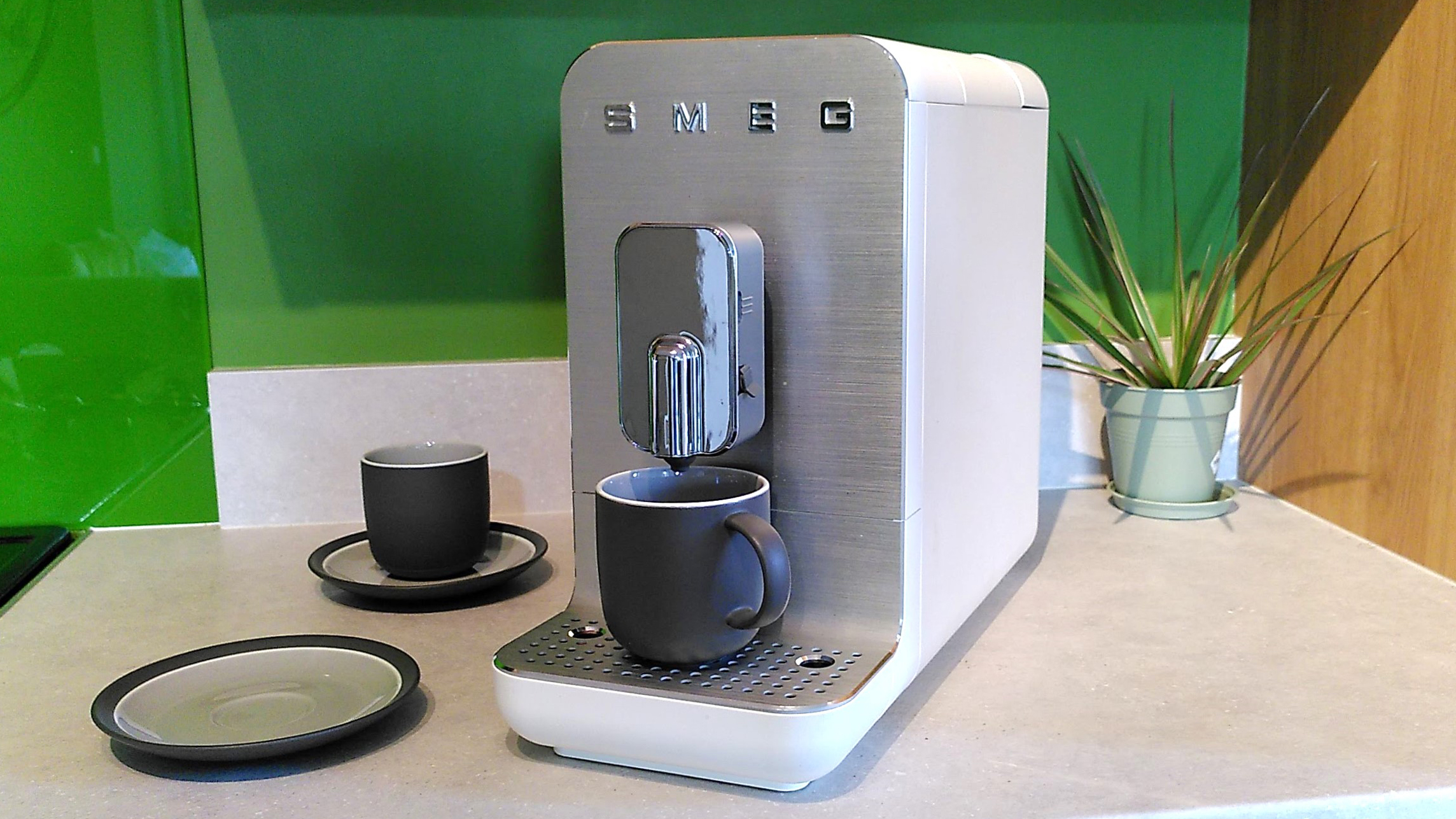
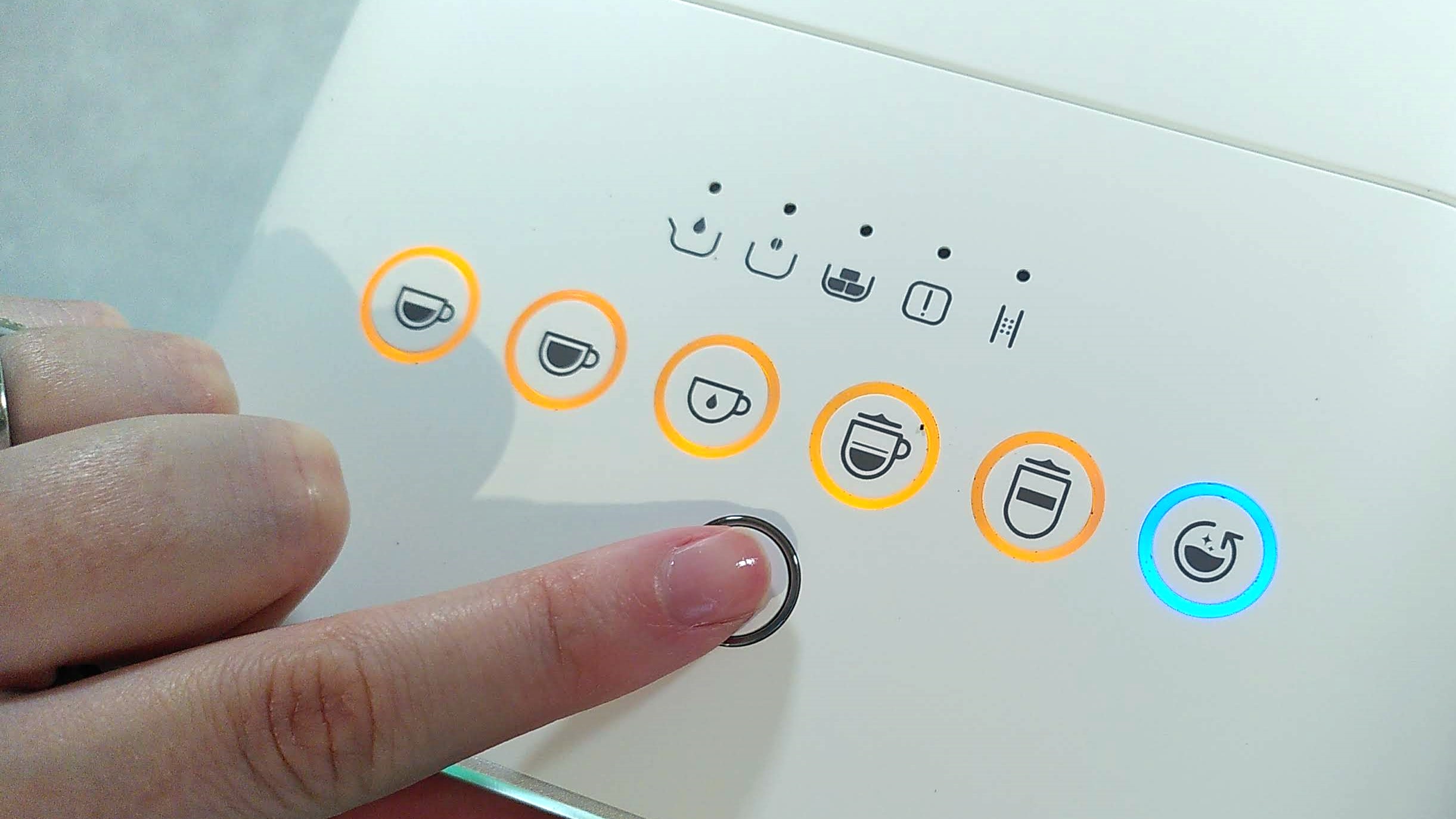
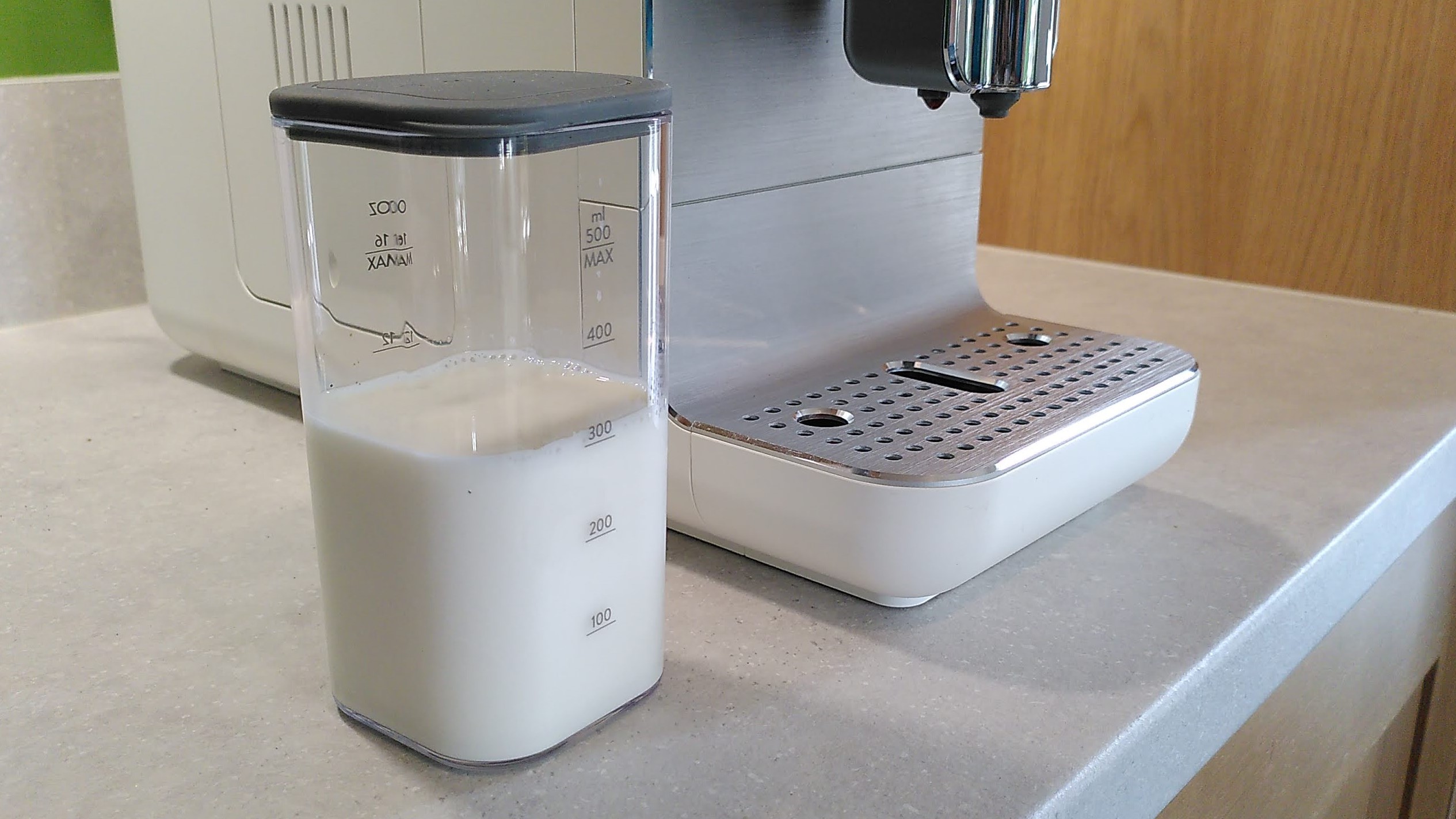
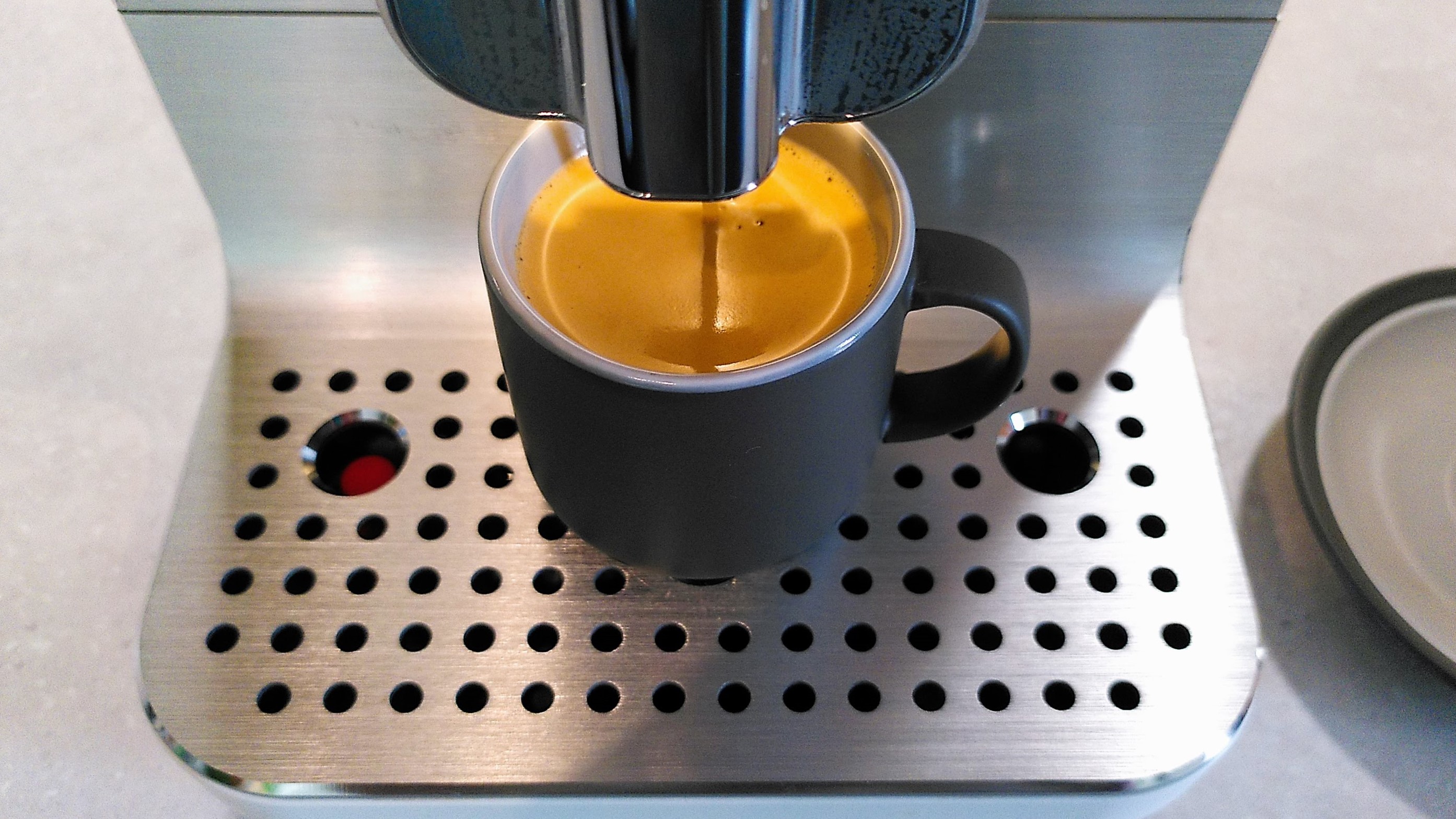
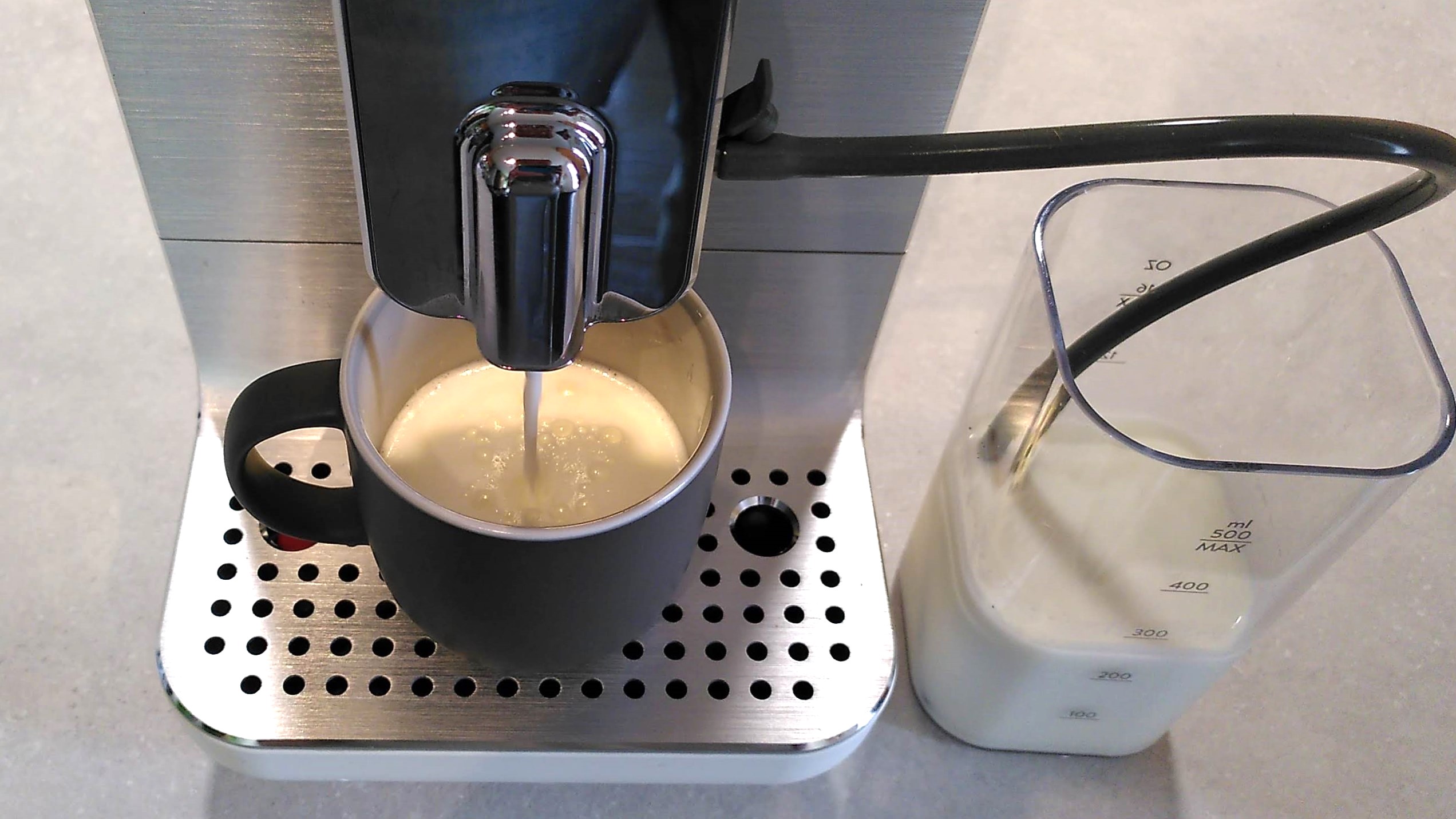
Specifications
Reasons to buy
Reasons to avoid
✅ You value ease of use: This fully automatic espresso machine couldn't be easier to use - just load up your beans, water, and milk, then press a button.
✅ You make several coffees daily: This espresso machine is a big investment, so you'll need to use it frequently to justify the price.
❌ Coffee-making is your hobby: If you want the tactile experience of making coffee, you can find a superb manual machine that will suit you better for much less cash.
❌ You mostly use plant based milk: The BCC13's auto milk system is designed with dairy in mind, and doesn't work so well with alternatives.
The Smeg BCC13 is a compact bean-to-cup espresso machine that handles every part of the process for you, from measuring and grinding the beans to frothing milk for cappuccinos and lattes. Just fill the water tank, add your beans to the hopper, and select your preferred drink using the set of buttons on top of the sleek chassis. You might need to refer to the manual the first few times, since each button can deliver two different drinks and the icons aren't immediately self-explanatory, but that's a pretty minor complaint.
Once that's done, the BCC13 will set about brewing tasty, well extracted coffee that's impressively consistent. The auto milk frother produces creamy, sweet microfoam when used with dairy milk, though (as Smeg itself warns you) it's not so great at handling plant-based alternatives.
The whole machine is finished to a very high standard, and is a cinch to keep fresh. There are no awkward nooks and crannies where grounds can get stuck, and the one-minute quick clean cycle keeps things hygienic between full cleanings.
Read our full Smeg BCC13 review
Attribute | Notes | Score |
|---|---|---|
Value | Not cheap, but within the normal range for a fully automatic bean-to-cup machine. If you need something cheaper, a manual machine may suit you better. | 4.5 / 5 |
Design | Extremely high build quality, and easy to use and keep clean on an everyday basis. | 5 / 5 |
Performance | Produces consistent results every time, with good quality coffee and well foamed dairy milk. | 5 / 5 |
The best small espresso machine
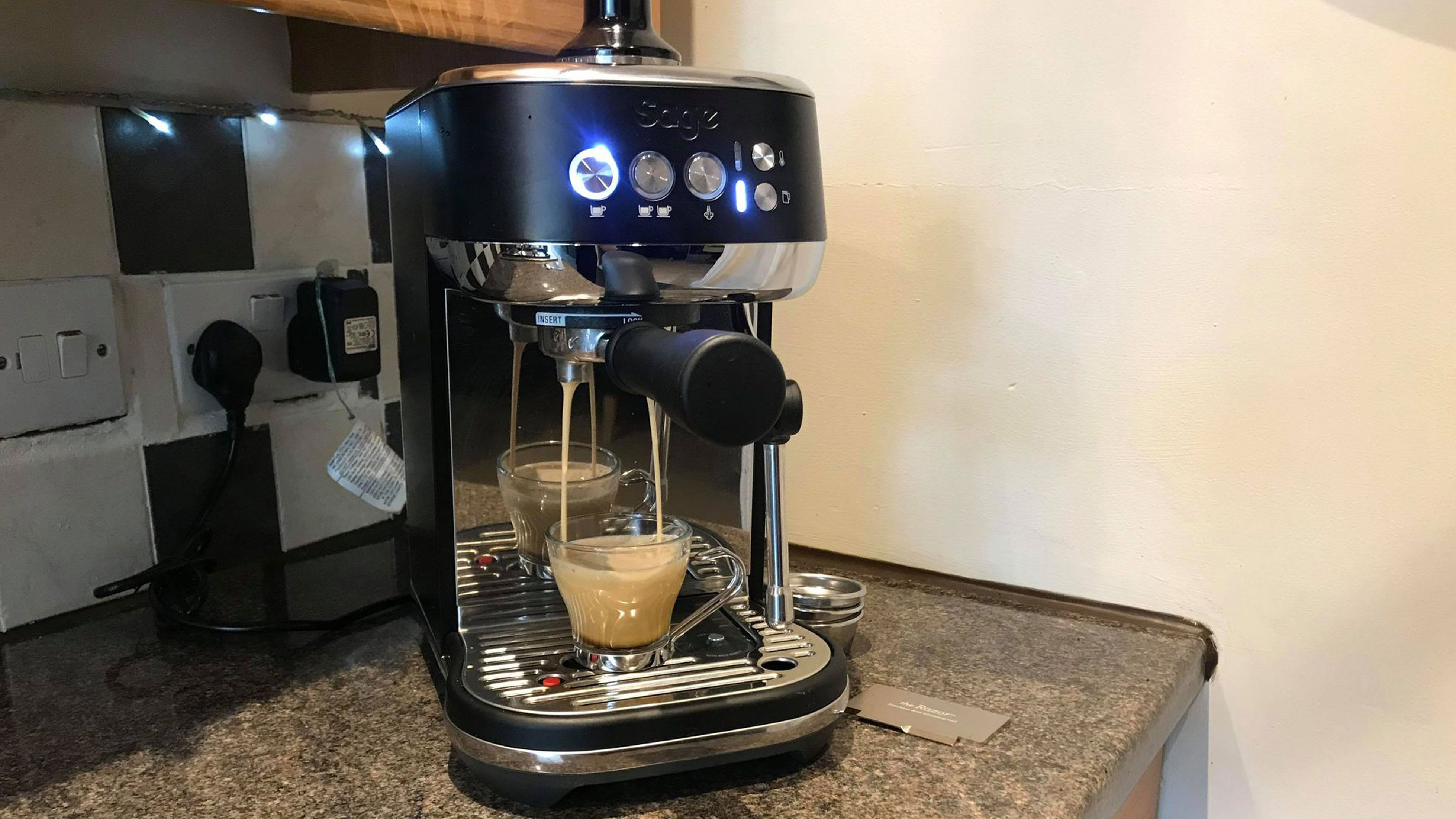
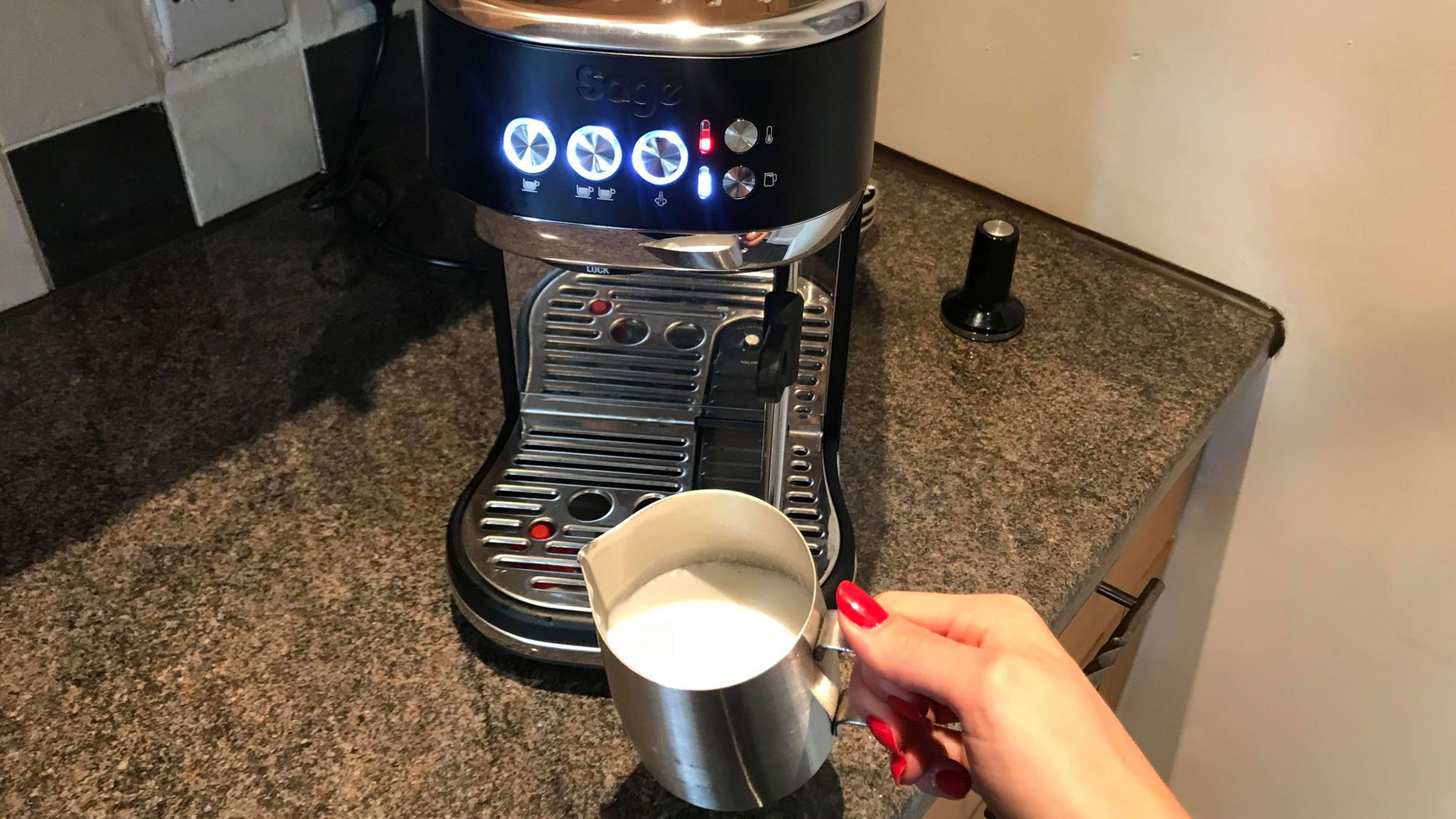
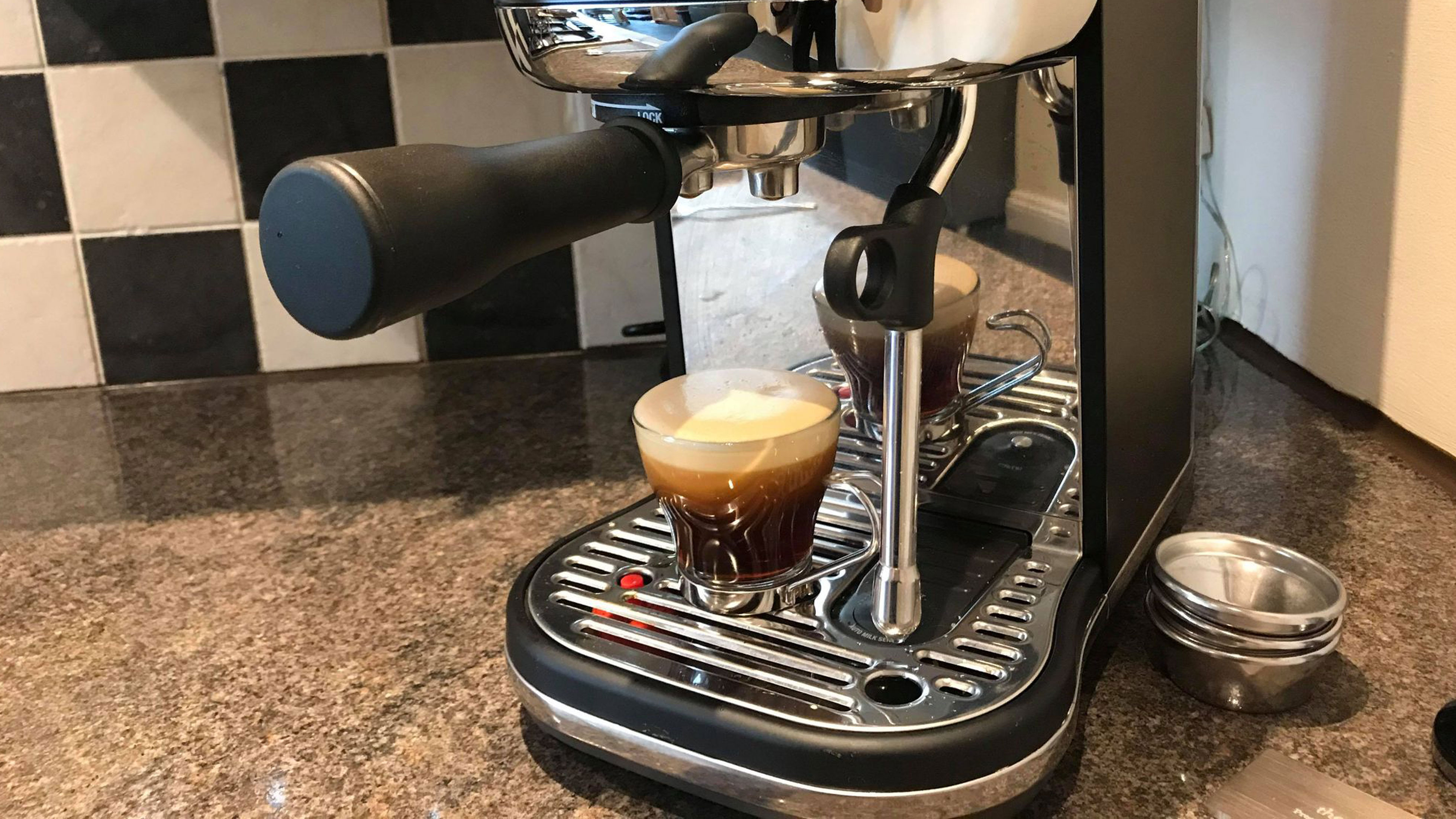
Specifications
Reasons to buy
Reasons to avoid
✅ You enjoy lattes and cappuccinos: The Bambino's steam wand is superb, particularly for a compact machine.
✅ You don't want to spend ages cleaning: This machine purges its own steam wand automatically, which is a nice touch.
❌ You want to use coffee pods: If you want to choose between grounds and pods, the De'Longhi Dedica Style EC685 is a better pick.
❌ You want to pull two shots at once: We found it tricky to put two espresso cups under the spout.
If you’re tight on space, then the Breville Bambino Plus offers similar features to the Gaggia Classic above but with a more compact footprint and a slightly more affordable price tag. On test, we found the Breville Bambino Plus – known as the Sage Bambino Plus in the UK – heated up in just three seconds. Milk frothing was nice and easy too, with a choice of three temperature and three milk textures, and the metal steam wand was a classy touch.
If you prefer you can instead texturize your milk manually, and however you do things the Bambino Plus will automatically purge the steam wand by pumping water through it once you're finished. This isn't a machine for complete beginners – you'll need to familiarize yourself with the art of choosing the right filter basket and ground coffee, as well as tamping the coffee down and trimming excess grounds – but once you learn its ways you'll find it to be an impressive and capable espresso maker.
Read our full Breville Bambino Plus review
Attribute | Notes | Score |
|---|---|---|
Value | One of the pricier compact espresso machines out there, and more expensive than the De'Longhi Dedica Style | 4 / 5 |
Design | Small footprint for compact kitchens, clear button interface, and robust-feeling build | 5 / 5 |
Performance | Fast heat-up and steady pressure help with achieving consistent results, and automatic milk texturizing works well | 5 / 5 |
The best espresso machine for beginners
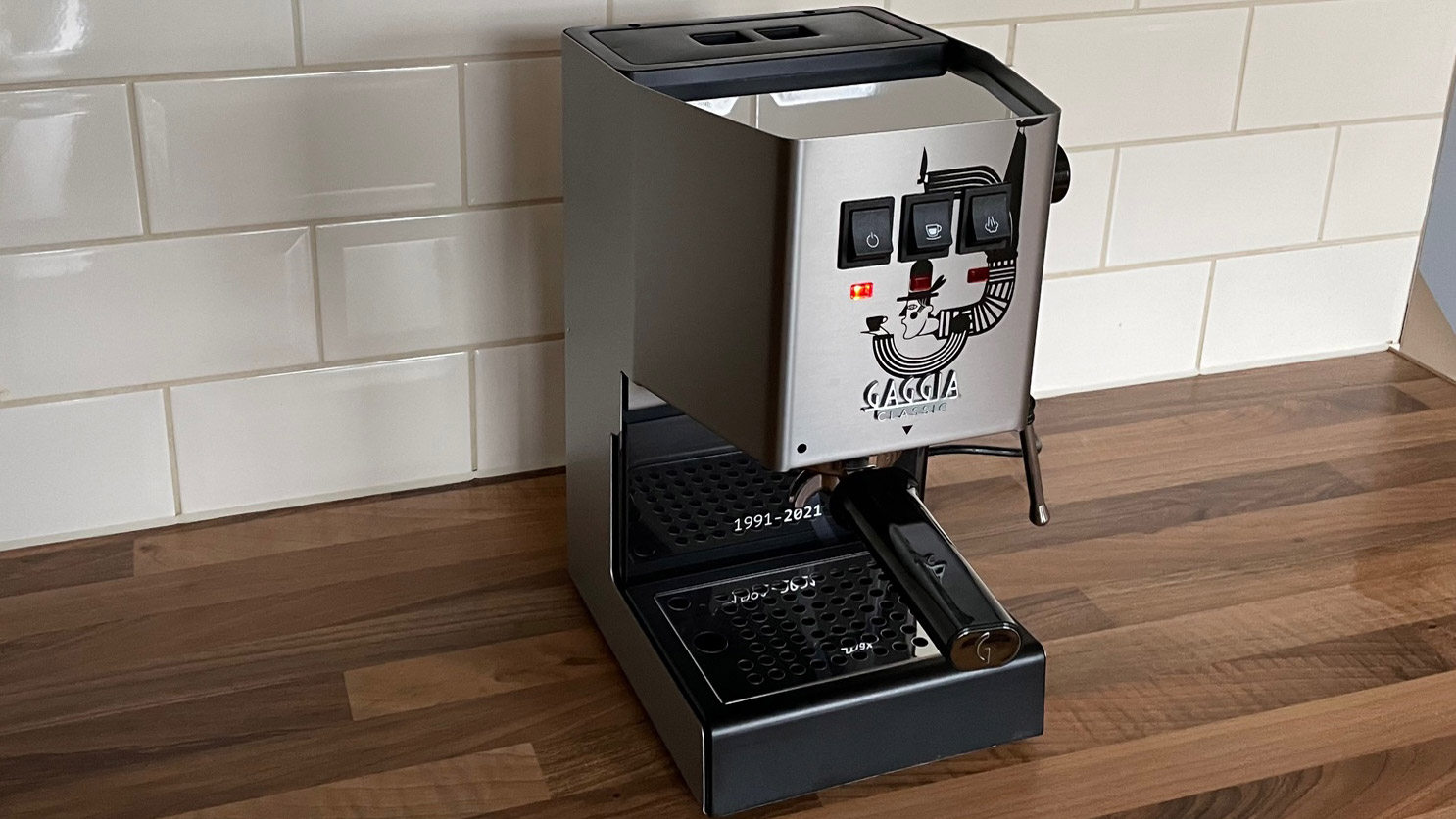
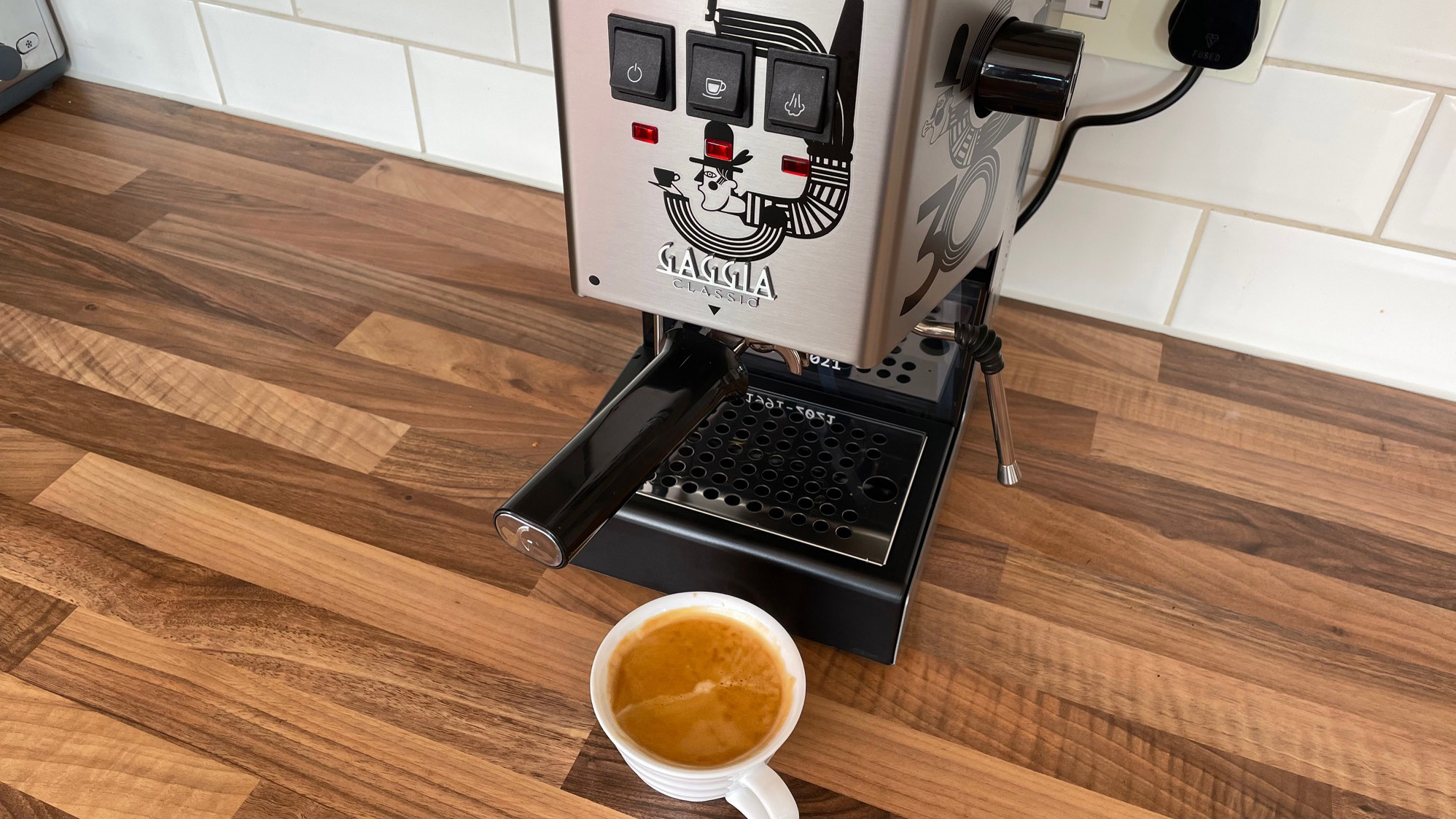
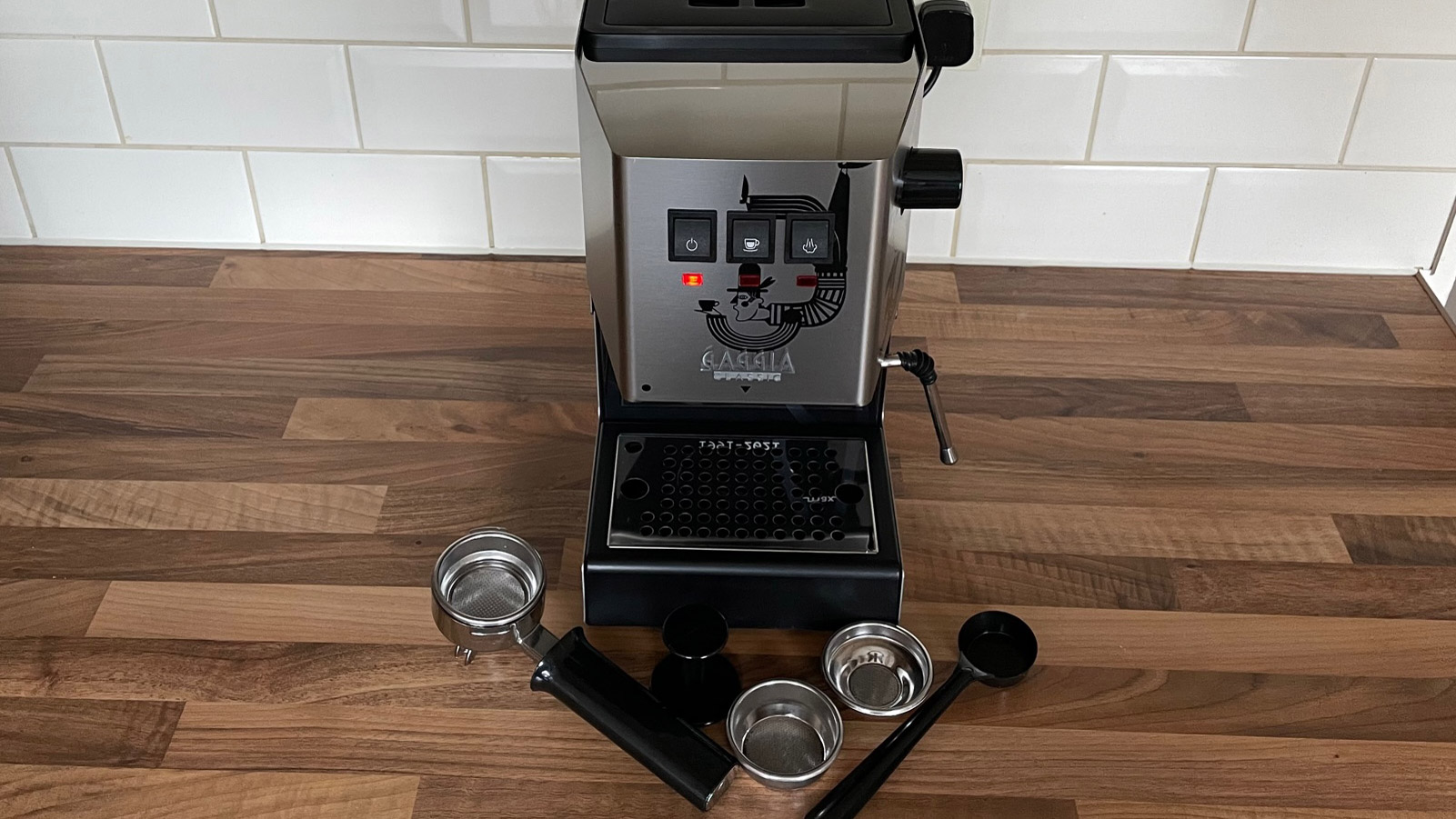
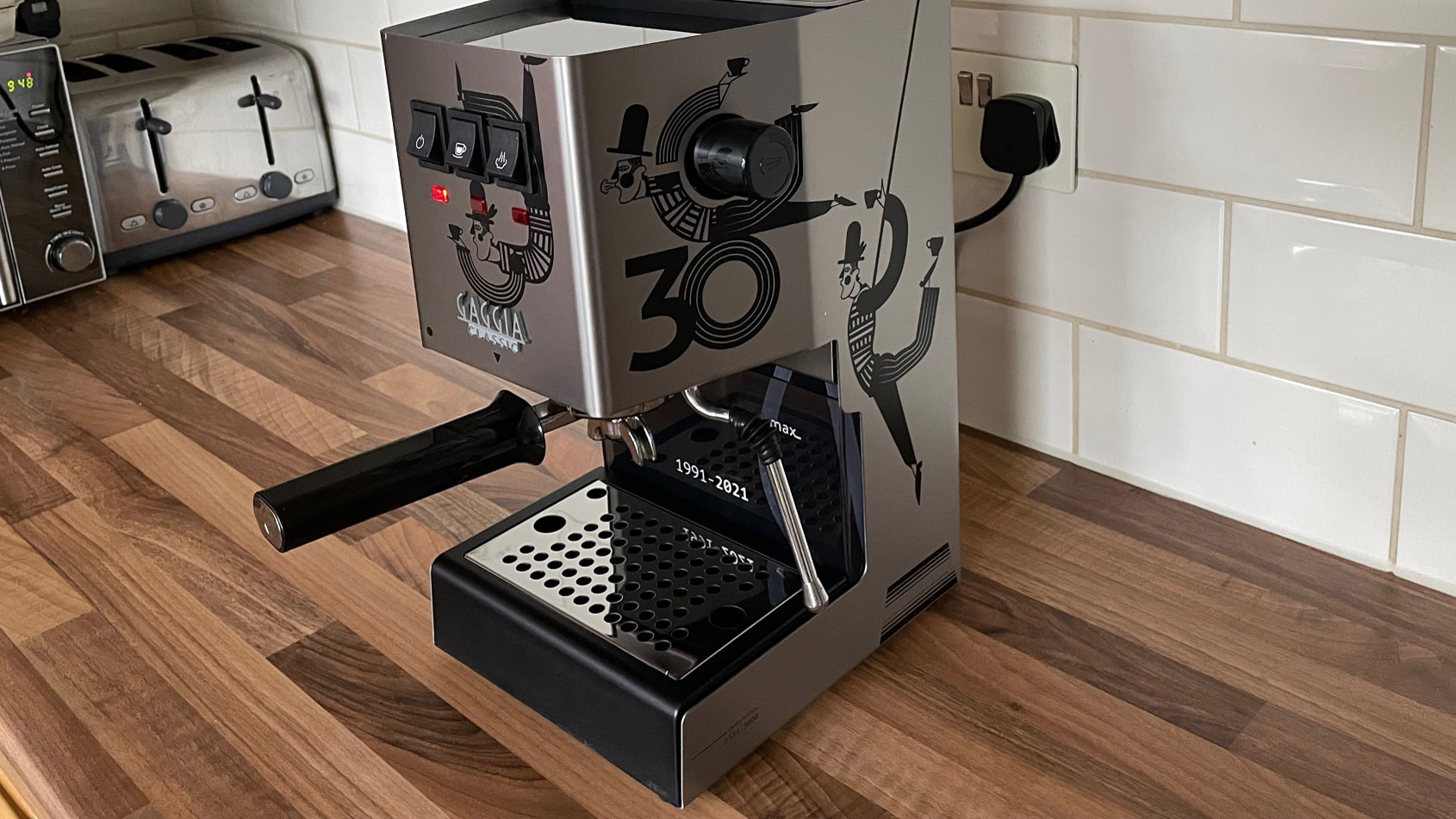
Specifications
Reasons to buy
Reasons to avoid
✅ You want the barista experience: This compact machine is fully manual, so you're in charge.
✅ You regularly make coffee drinks with milk: The Gaggia Classic has an excellent steam wand, and with a little practice you can foam dairy or plant milk to perfection.
❌ You're on a budget: There are cheaper manual espresso machines around - you're paying extra here for build quality and style.
❌ You want an all-in-one espresso machine: The Gaggia Classic doesn't have a grinder, so you'll need a separate one.
The Gaggia Classic was our #1 espresso maker in 2021 and 2022 but it has since been knocked off its perch to make way for new machines. Whilst we do still think that it is one of the best espresso machines it is a little older than some of the others that we now feature in this guide. But it's still a great choice.
Gaggia says it will produce a shot of coffee with a thick crema without experimenting with the coffee grind size, making it ideal for those who want to learn how to use an espresso machine before attempting to play barista. It also offers complete manual control over how much water is dispensed, allowing you to create the volume of coffee you want.
On test, we were impressed that the coffee was rich and intense. With all three filters, it had a stable crema that reformed when we sprinkled sugar on top. The built-in steam wand ensures you can make milk-based coffee drinks too.
Read our full Gaggia Classic review
Attribute | Notes | Score |
|---|---|---|
Value | One of the most expensive manual espresso machines on test, but build quality is exceptional, and production has moved back to Italy. | 5 / 5 |
Design | A timeless design that's remained largely unchanged since 1991, for good reason. | 5 / 5 |
Performance | Very simple to use, making it easy to brew well-balanced espresso. | 5 / 5 |
The best espresso machine for lattes
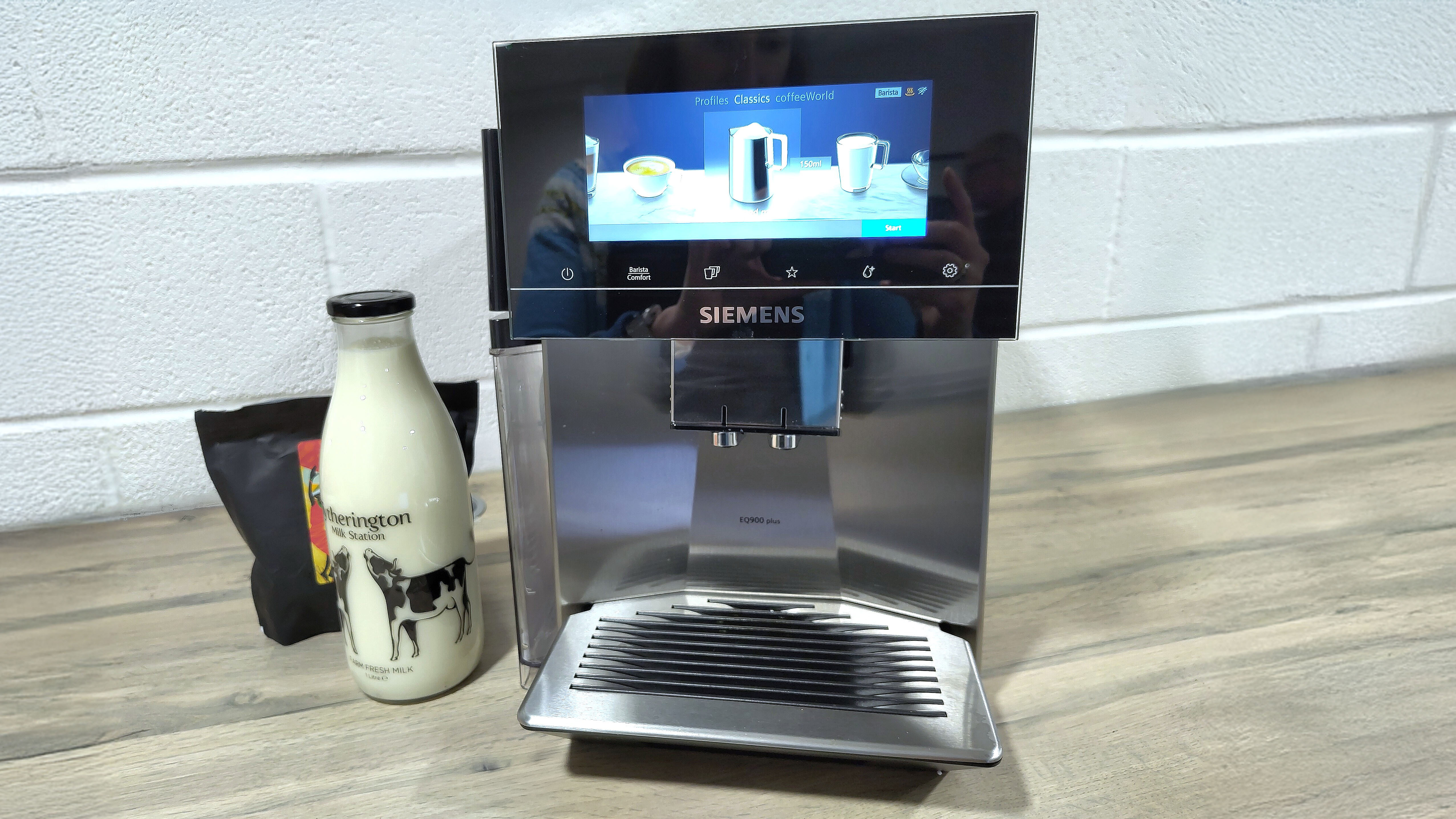
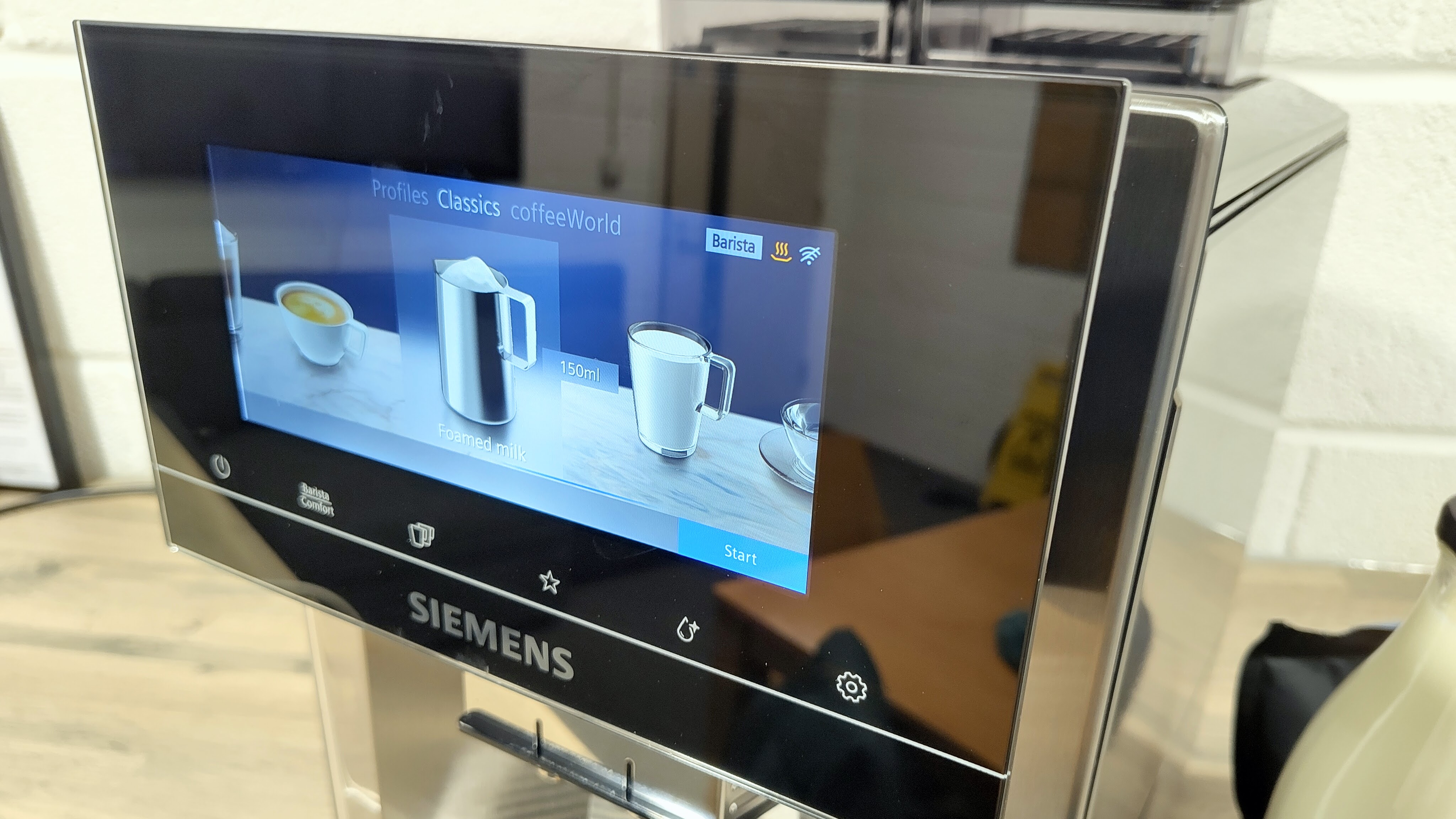
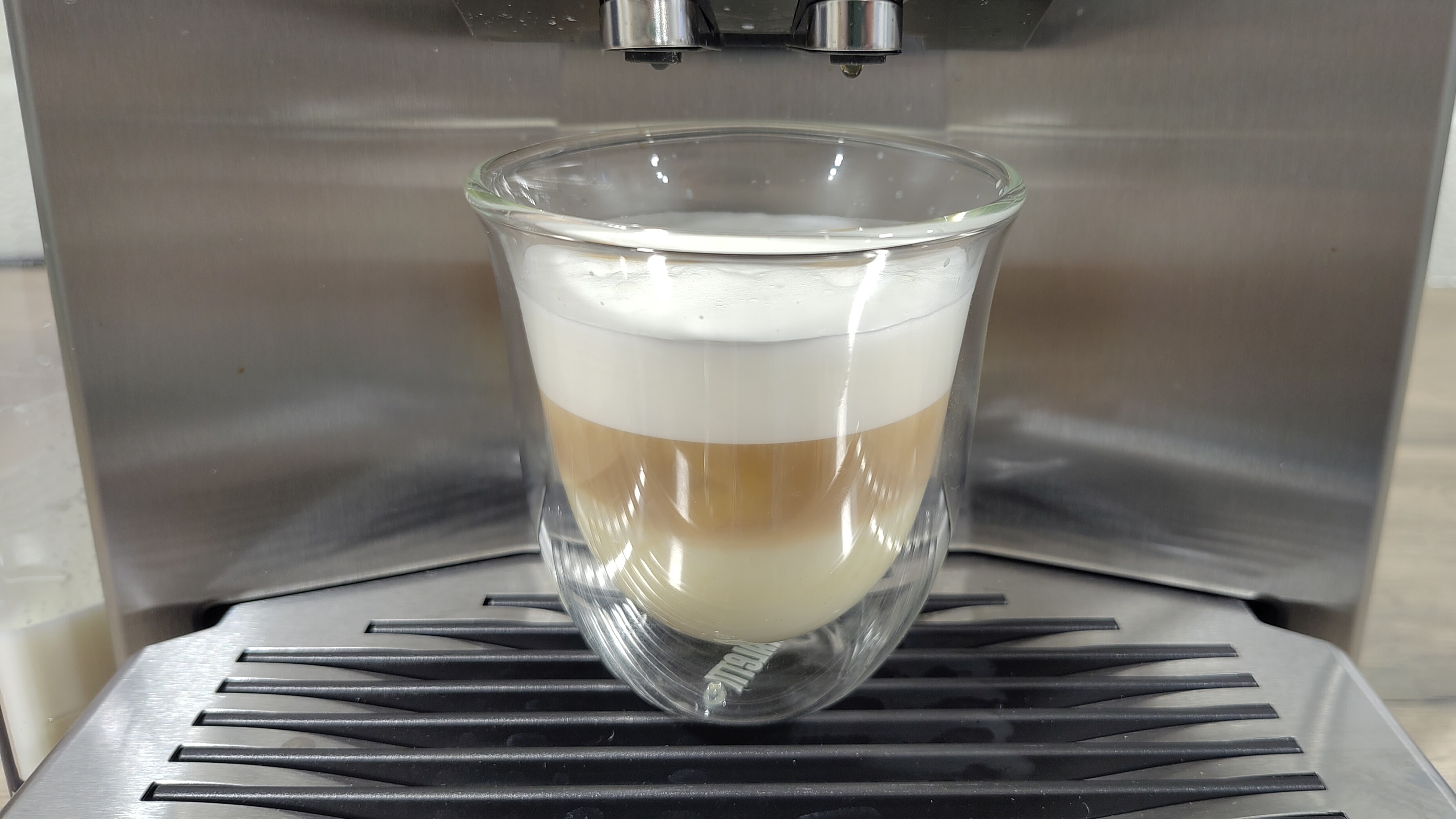
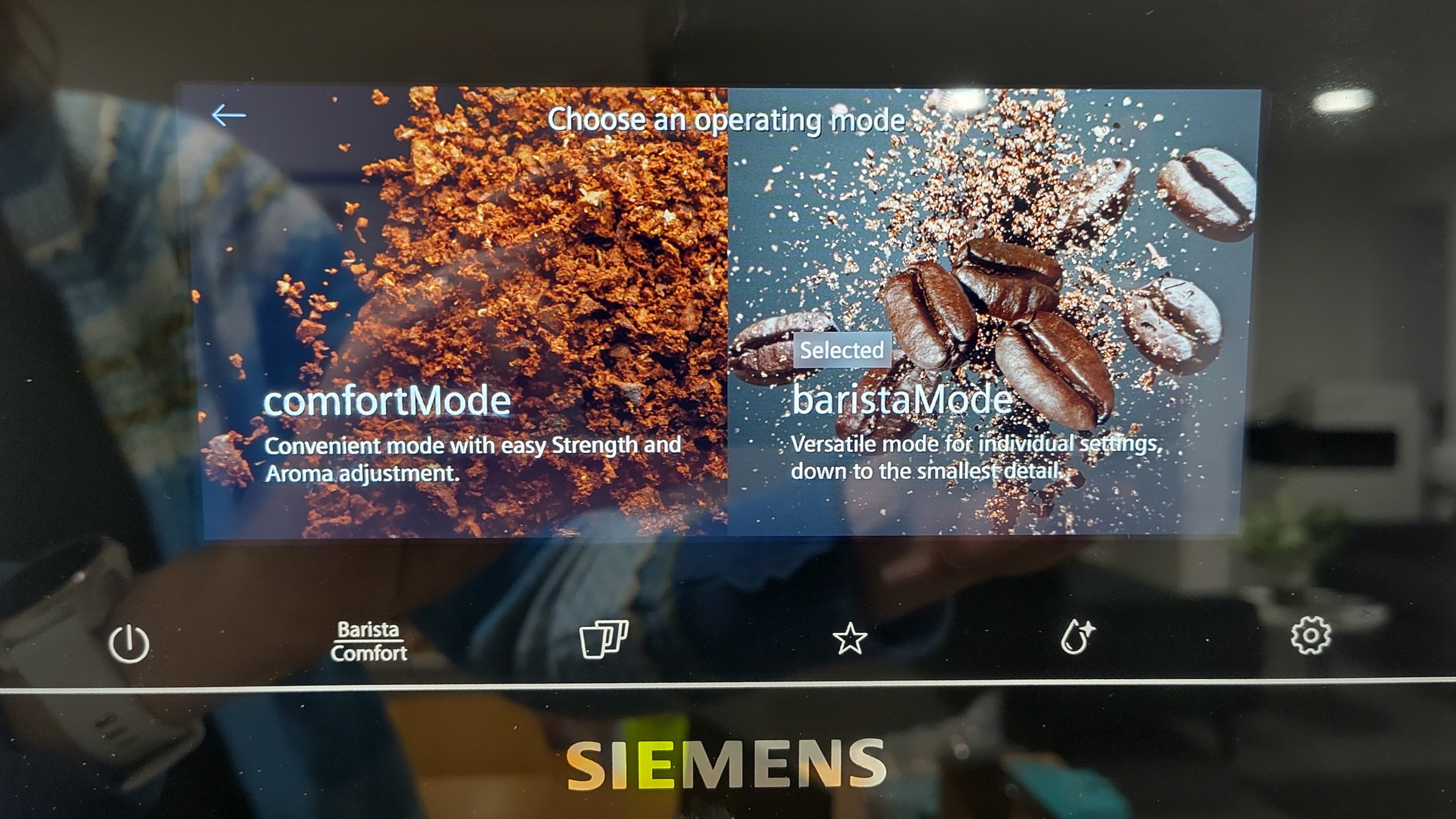
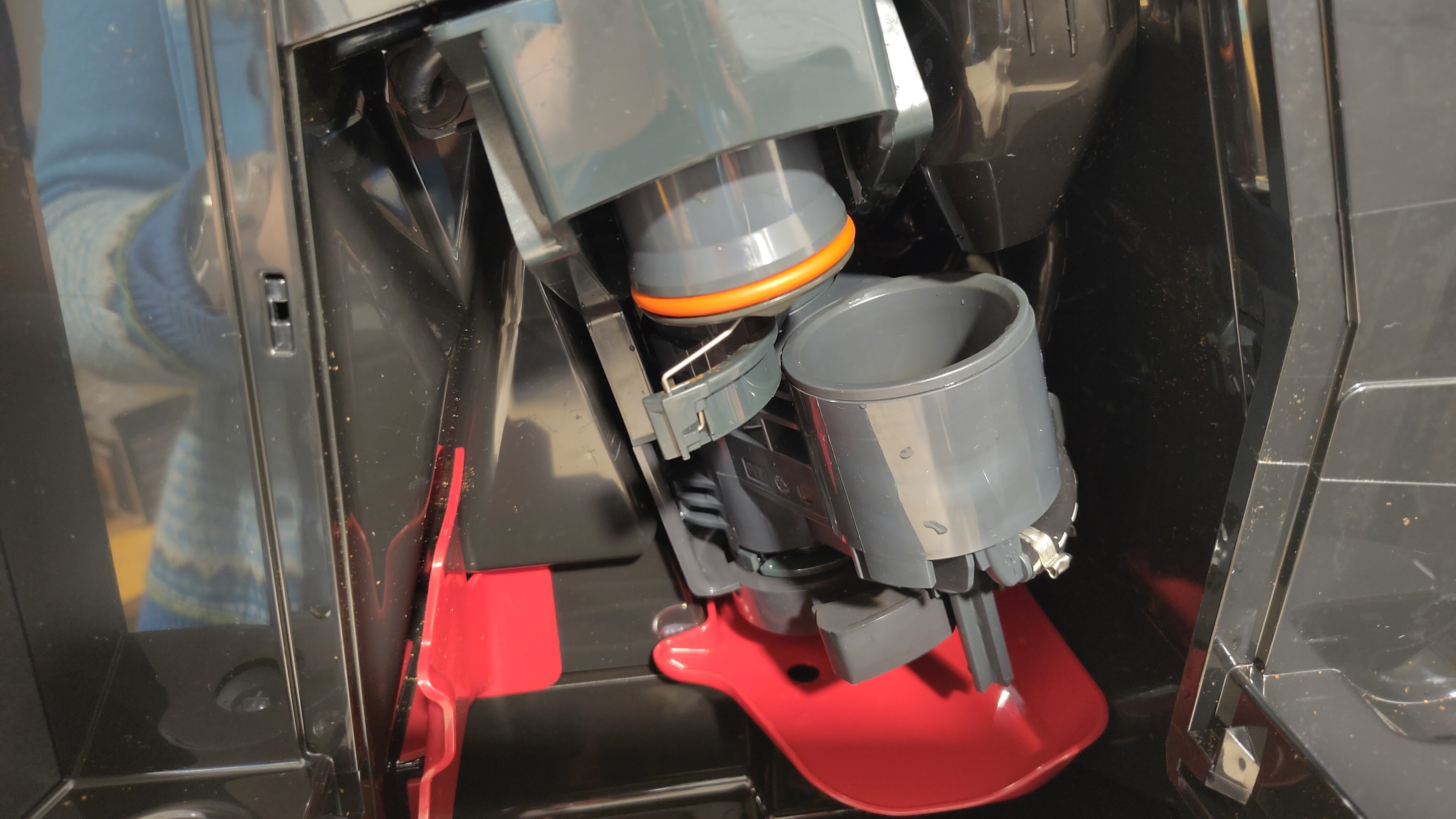
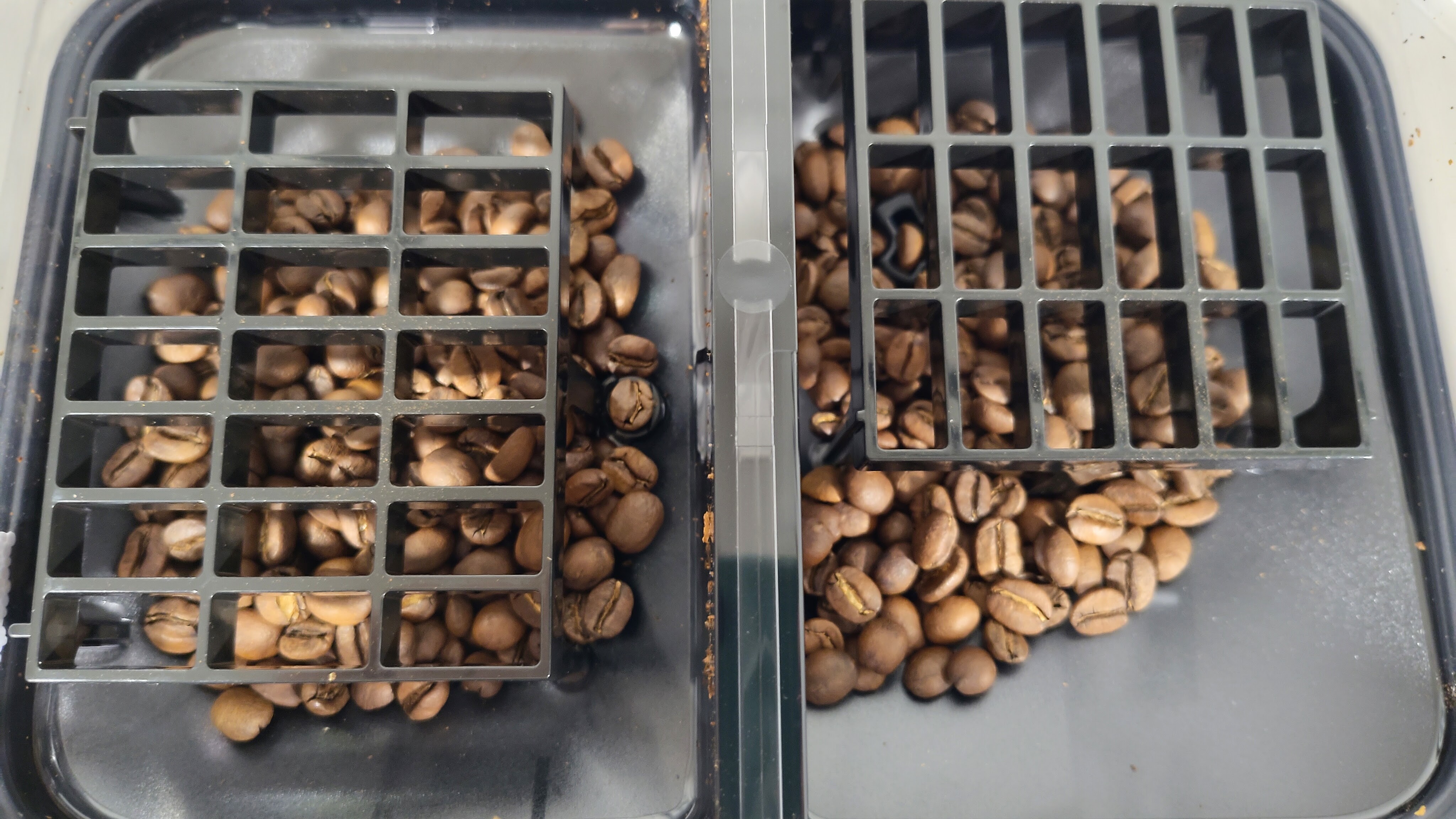
Specifications
Reasons to buy
Reasons to avoid
✅ You enjoy lattes: This is the best fully automatic espresso machine we've tested when it comes to texturizing milk.
✅ You want easy maintenance: Fully automatic espresso machines need regular deep cleaning, and the Siemens EQ900 Plus makes it as straightforward as possible.
❌ You love one particular bean: The dual hoppers are one of this espresso machine's key selling points, along with its ability to suggest settings for different types and blends. If you always stick to one bean, you won't be getting the most out of it.
❌ You're watching the pennies: This is a very expensive espresso machine. If you want something similar but cheaper, take a look at the standard Siemens EQ900.
If you enjoy milky coffee drinks but can't quite get the hang of a manual steam wand (or don't have time in the morning), this is the ideal espresso machine for you. It's one of the best bean-to-cup coffee machines I've tested, and is particularly great when it comes to milk texturizing, producing silky, stable, sweet microfoam that rivals the work of a professional barista.
When it come to espresso, you're spoilt for choice. This is an espresso machine that encourages tinkering, with a huge color touchscreen that makes it easy to adjust virtually every variable, from dosage and grind size to water temperature and infusion time. If you're not quite sure where to begin, the machine can suggest optimum settings based on the type of beans you're using (a system called BeanIdent), which you can then tweak to suit your tastes and save as a favorite in your personal profile. The machine supports up to 10 of these, so your family and guests can store their own preferences.
Another of the EQ900 Plus's best features is its dual hopper, which lets you switch between two different beans on the fly; ideal if you want to switch to decaf in the evening or you and your partner have different preferences. There's also a handy smart cleaning system that stores two tablets (one for descaling and one for cleaning) just above the milk container for more straightforward maintenance.
The biggest drawback here is the price, and this is one of the most expensive espresso machines we've tested. However, if you don't mind foregoing the smart cleaning system, you can save a significant chunk of cash by opting for the standard Siemens EQ900, which has the same excellent auto milk frother. Take a look at both and decide which one fits your needs best.
Read our full Siemens EQ900 Plus review
Attribute | Notes | Score |
|---|---|---|
Value | A premium machine with a price to match, but I don't think it does enough to justify how much more expensive it is over the standard EQ900. | 3/5 |
Design | Dual bean hoppers are a real selling point, and the machine is refreshingly easy to clean; but the water tank can be fiddly to wash and insert. | 4/5 |
Performance | Brews a very good espresso (although I find the KitchenAid K8 slightly better), and is unbeatable when it comes to milk texturizing. | 4.5/5 |
The best espresso machine for flavored coffee
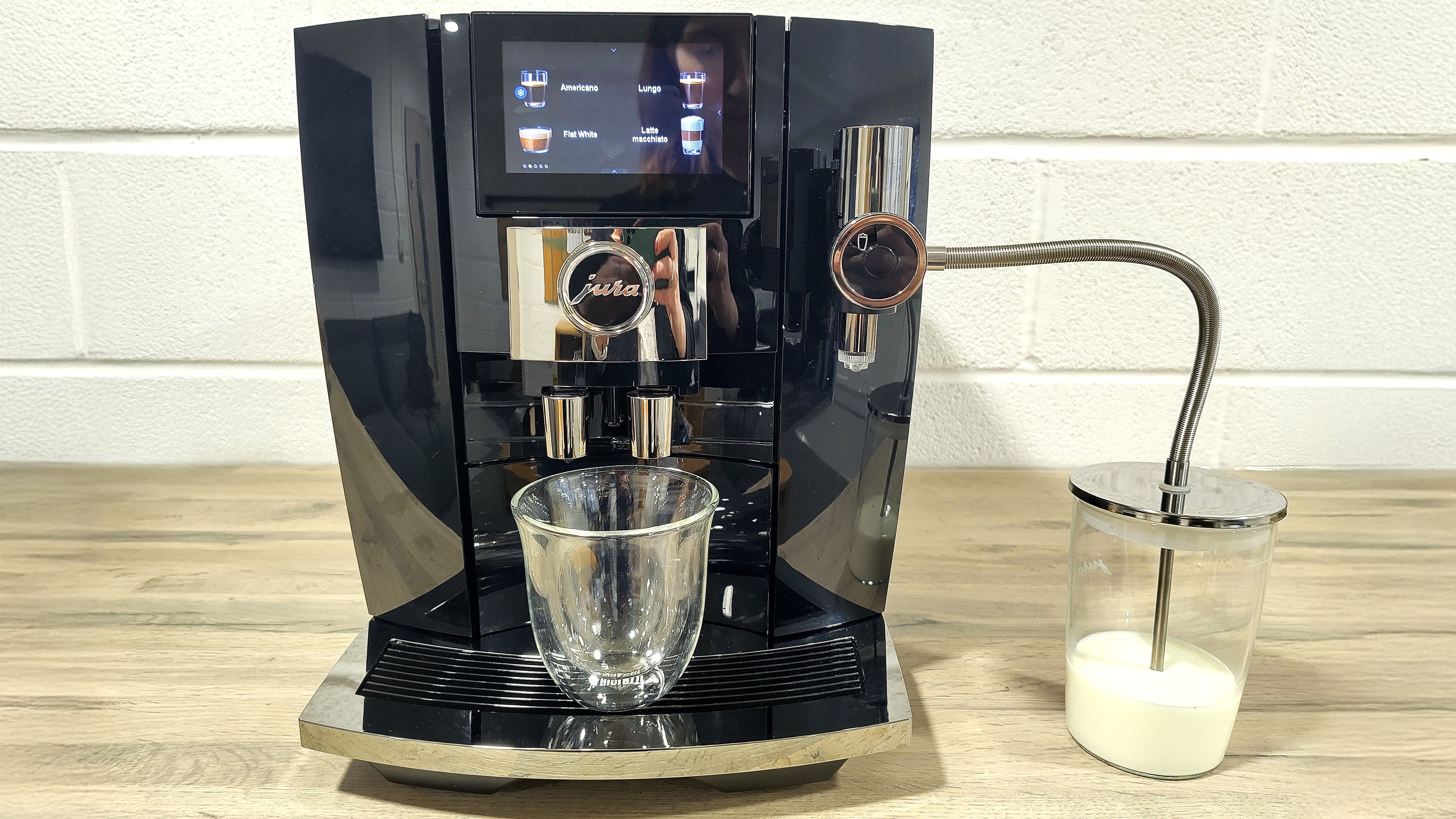
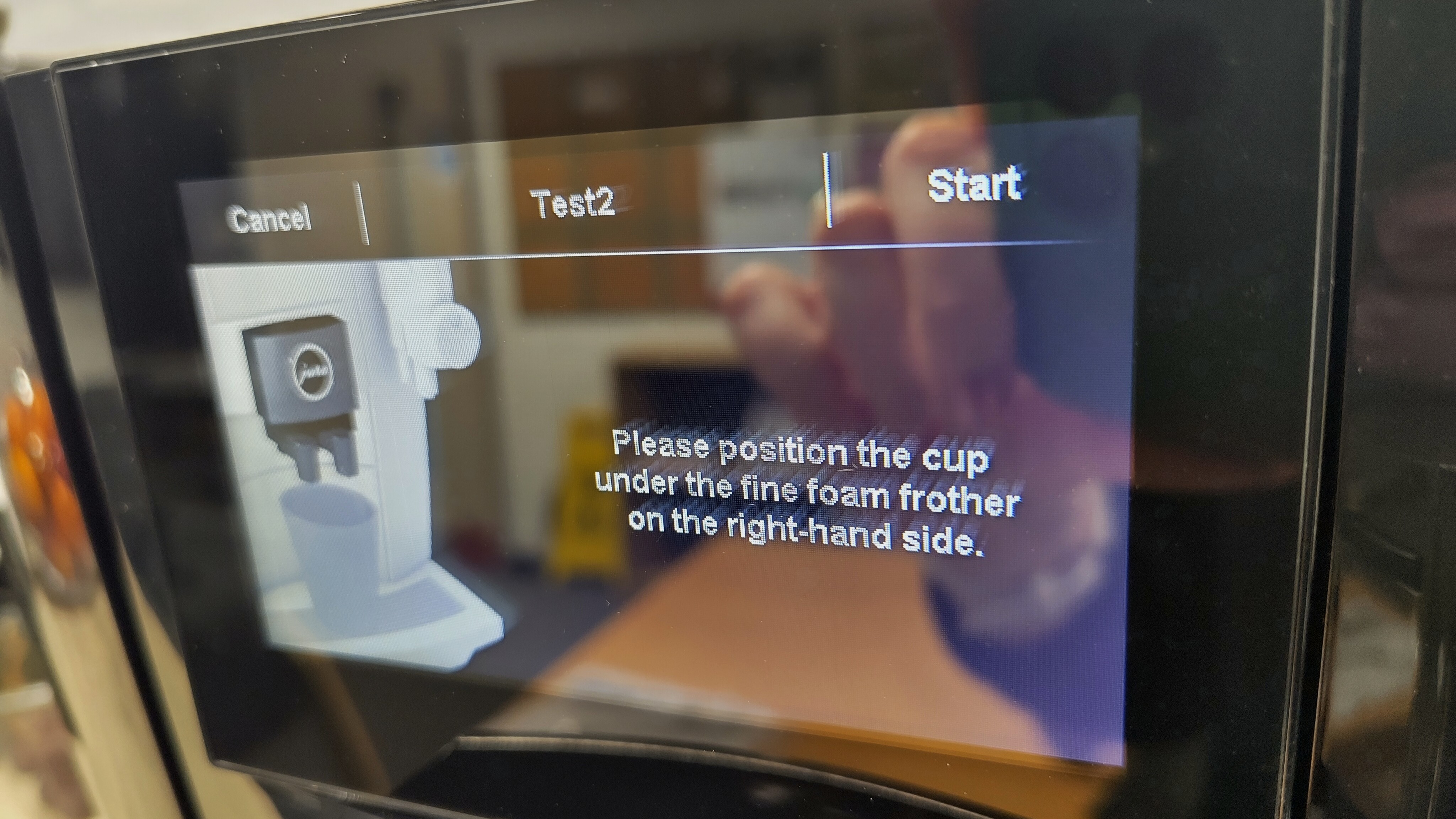
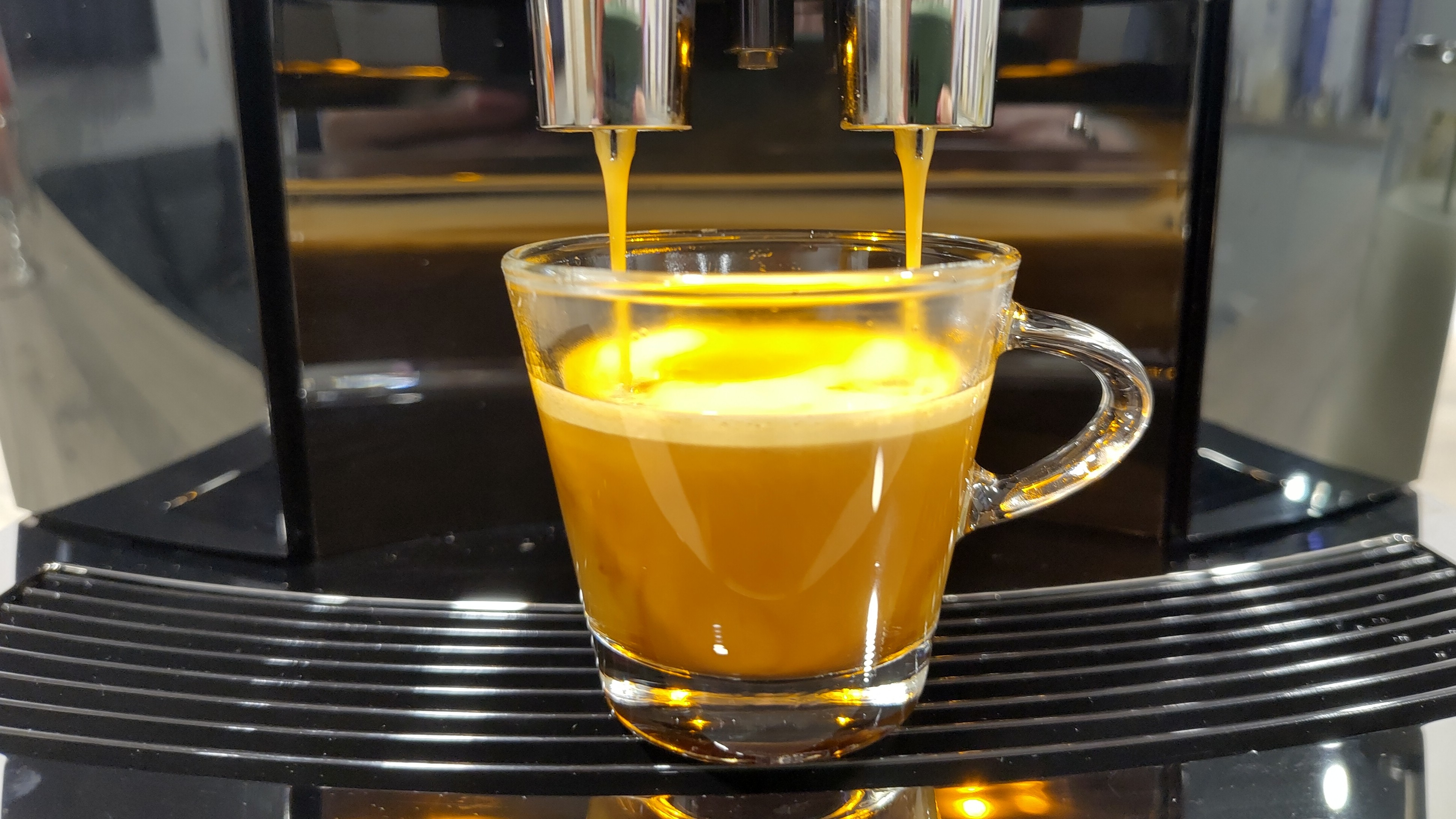
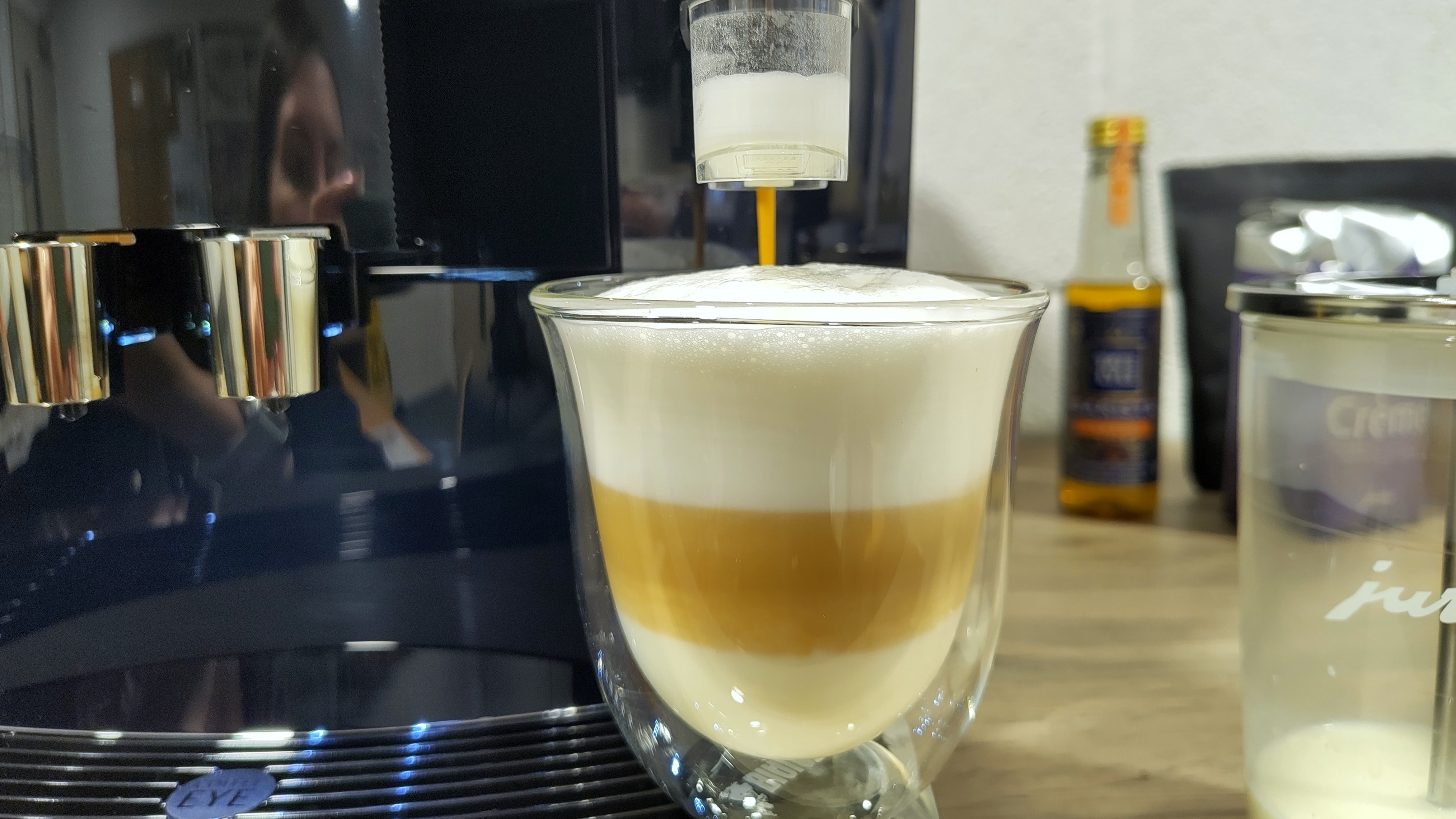
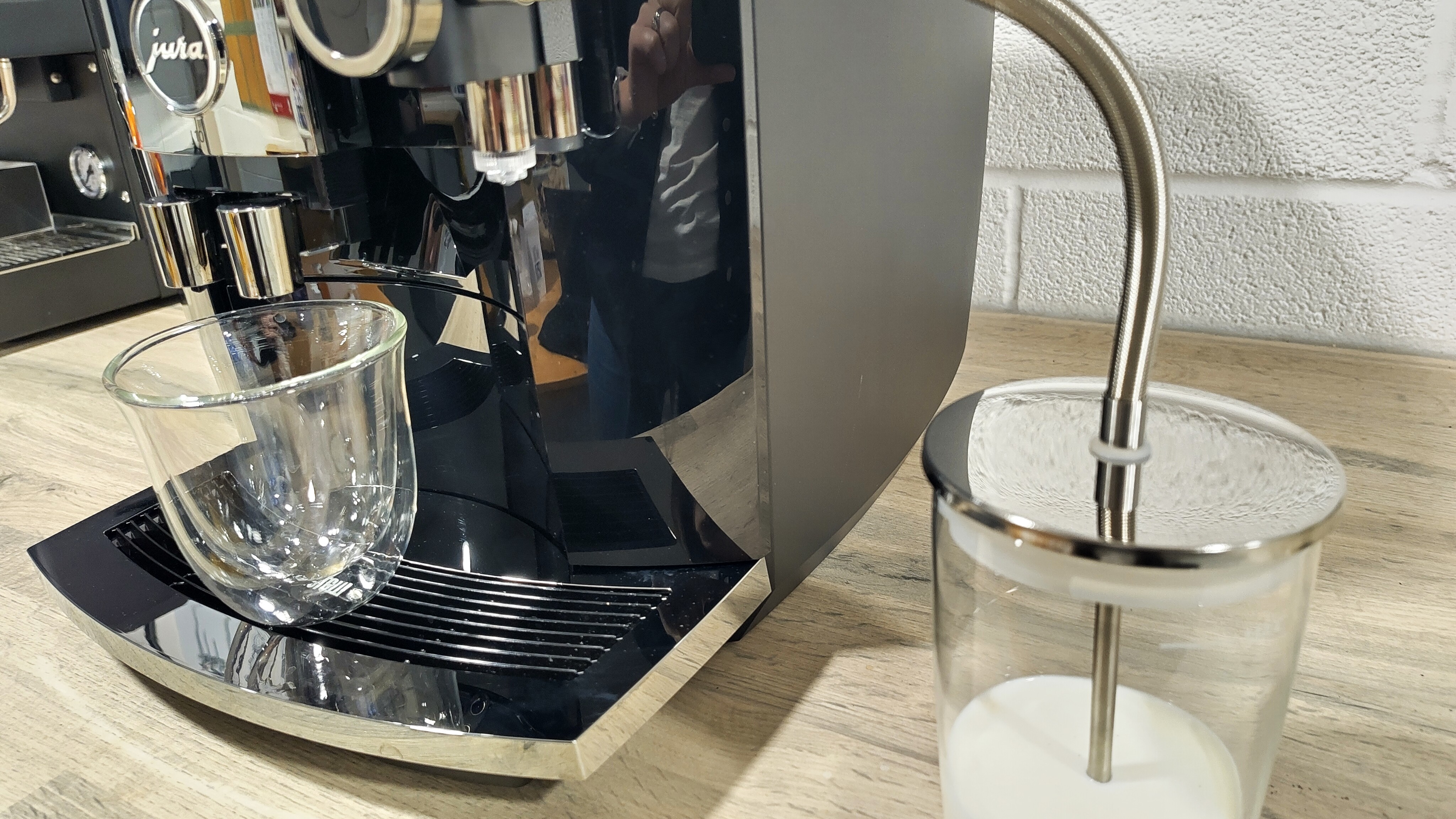

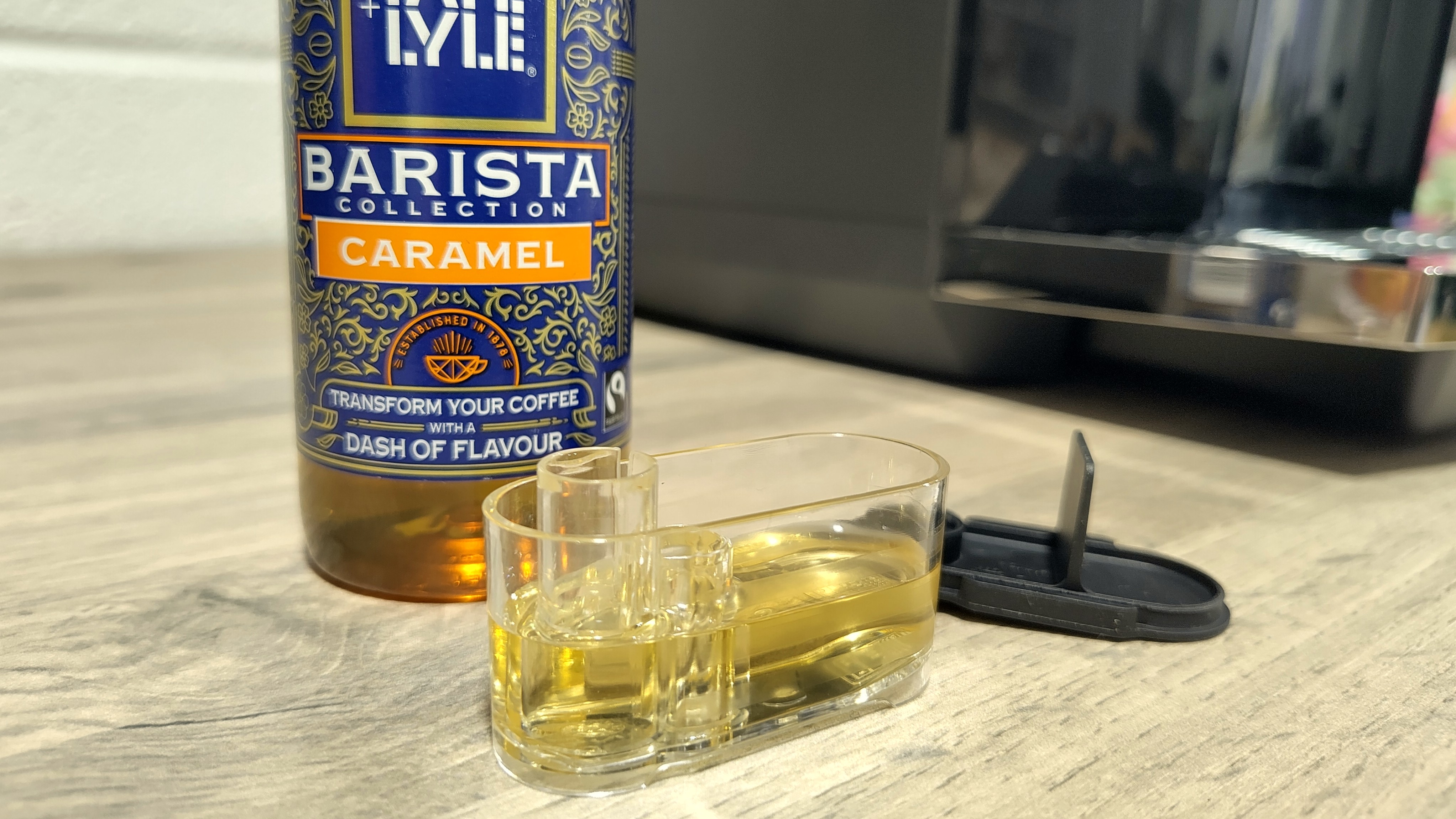
Specifications
Reasons to buy
Reasons to avoid
✅ You enjoy decadent coffee drinks: With its granular customization and Sweet Foam system, the Jura J10 lets you craft complicated drink orders at home.
✅ You like cold brew: The J10's new 'pulsing' cold brewing system produces a flavor profile strikingly similar to coffee brewed cold overnight.
❌ You're a bit clumsy: The Jura J10's drip tray is unusually wide and shallow, making it more prone to spilling.
❌ You love a simple espresso: You can save a lot of cash by opting for a more simple machine if you're not going to use all of the J10's features.
The Jura J10 is a versatile fully automatic espresso machine that makes it easy to recreate complicated coffee shop orders at home, including hot and cold brew, and drinks sweetened with syrup.
It's controlled via a large, bright full-color touchscreen, which lets you take your pick from an extensive collection of customizable presets, or create your own. Unusually, the J10 has two dispensers (one for espresso and hot water, and another for espresso and milk), and the J10's Coffee Eye system will detect where you've placed your cup and change the menu options accordingly. It's a smart touch, as is the ability to tap a button to see which drinks in the menu can be brewed cold, or with syrup.
The machine doesn't adjust the grind size automatically, which is a little surprising. Instead you'll be promoted to set it manually using a dial next to the hopper, on top of the machine. It's worth being aware that you don't get much time to do this, or tinker with other settings before the machine times out and continues to the next step of brewing or returns you to the main menu.
Aside from that, the Jura J10 is hard to fault. Espresso is consistently well extracted with rich, golden crema, milk is perfectly textured, and the Sweet Foam system is a smart way to add plenty of flavor to your drink without using multiple pumps of syrup.
Read our full Jura J10 review
Attribute | Notes | Score |
|---|---|---|
Value | A premium machine with a price to match, but similar to equivalently specced rivals. | 4/5 |
Design | A stylish machine with a well-considered interface and smart dual dispensers. The only real drawback is an unusually wide and shallow drip tray that can be easy to spill. | 4.5/5 |
Performance | Produces consistently excellent coffee, and cold brew and Sweet Foam are genuinely great features rather than gimmicks. | 5/5 |
The best espresso machine if money is no object
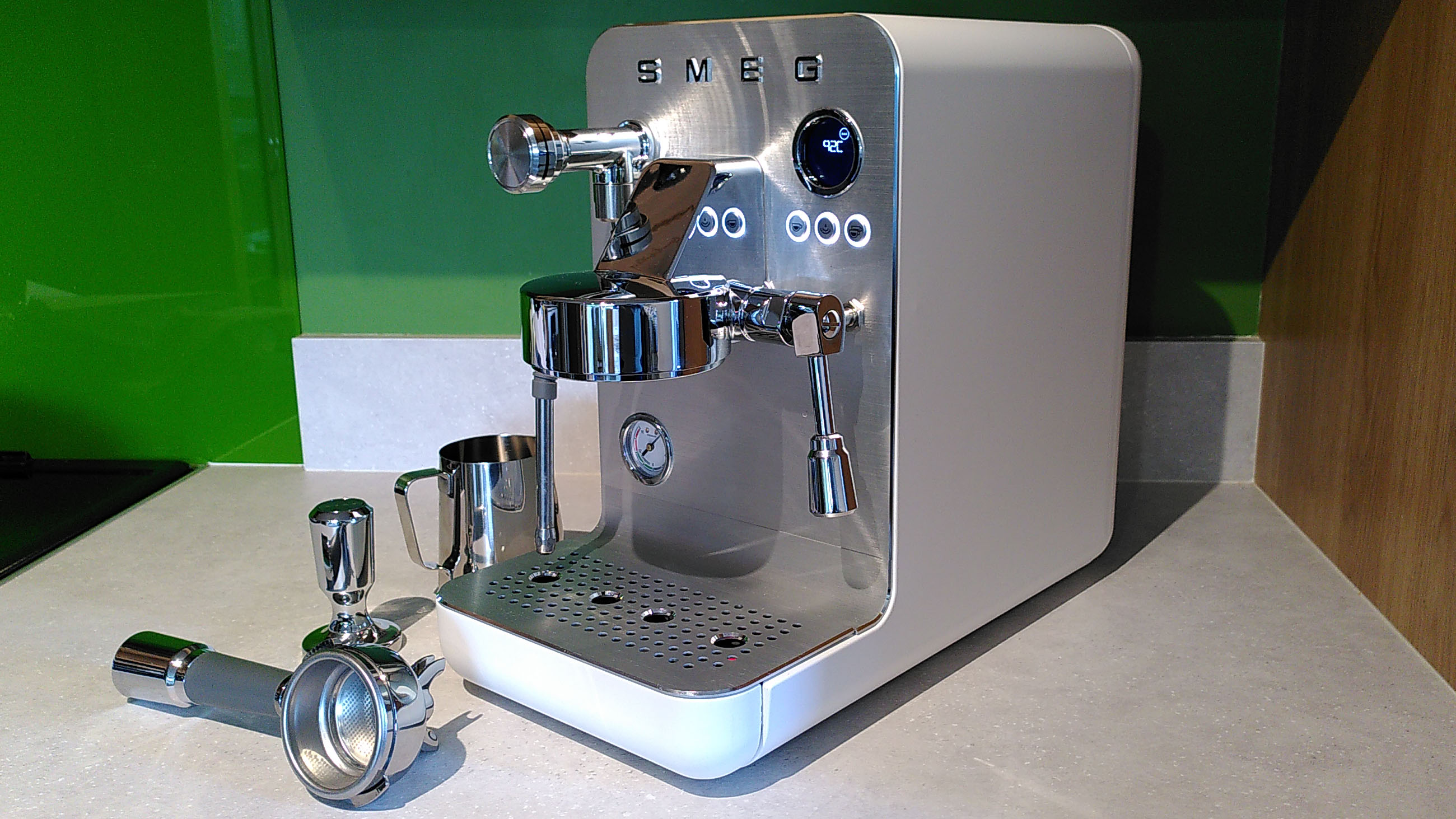
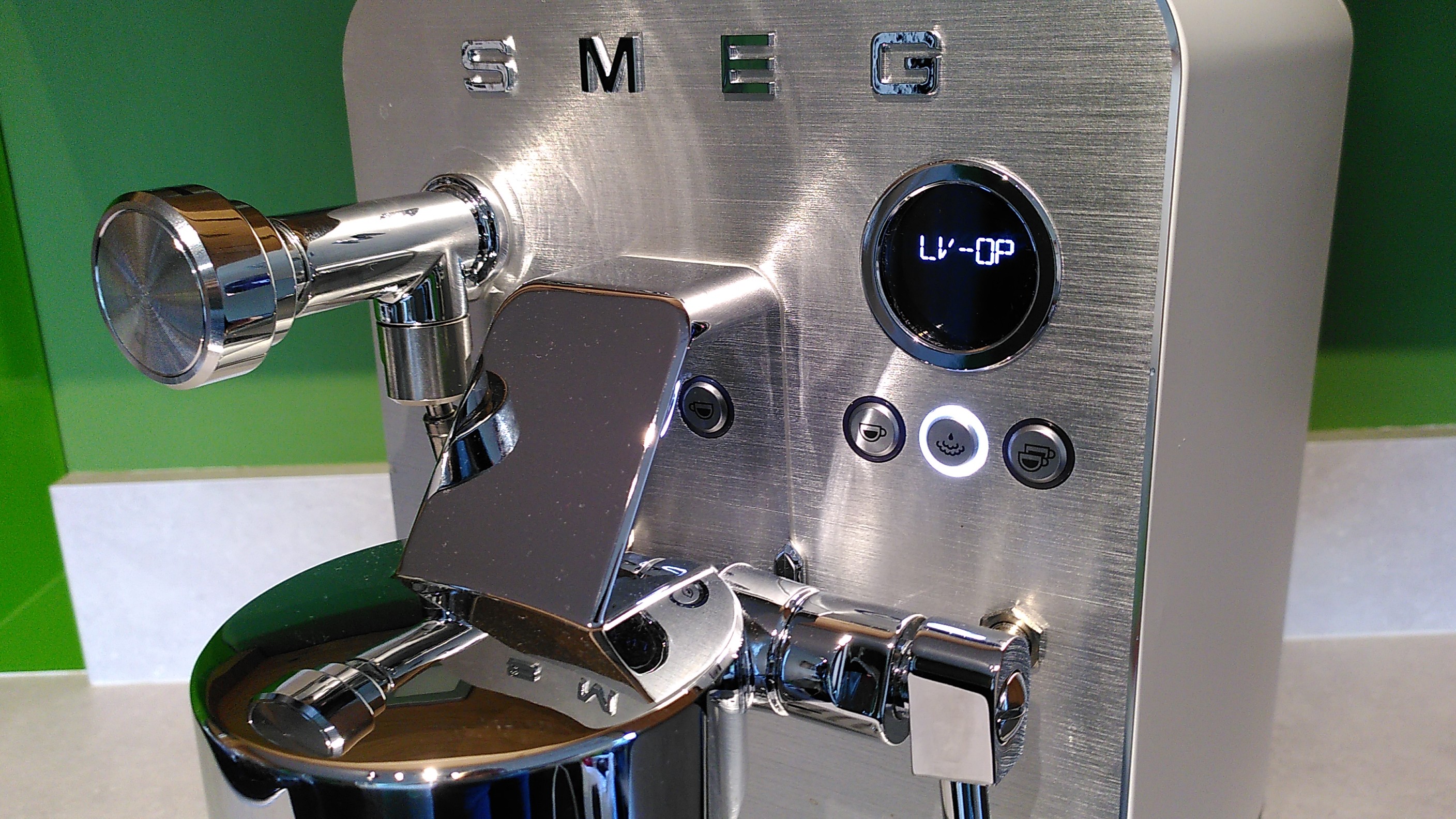

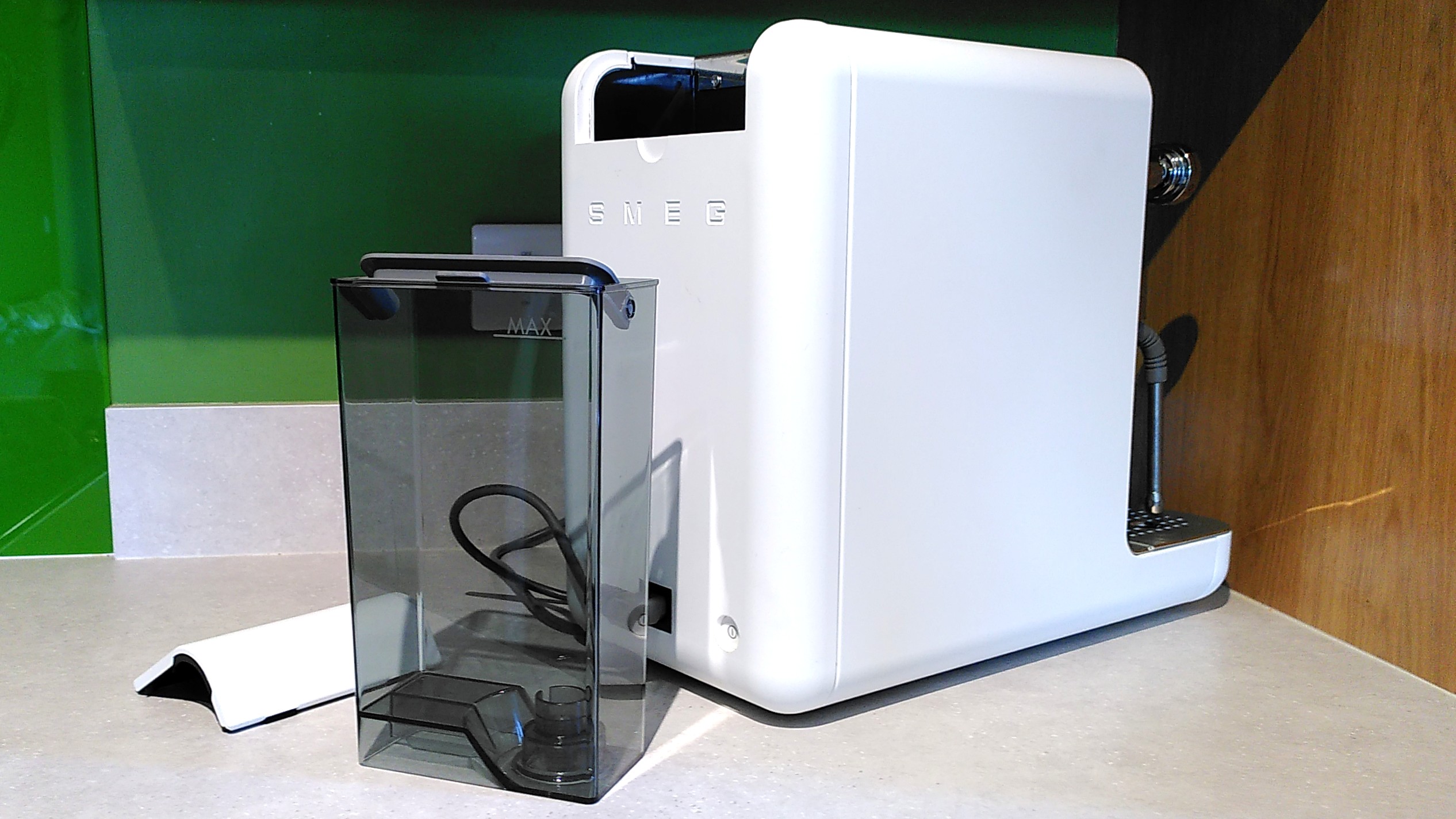
Specifications
Reasons to buy
Reasons to avoid
✅ You love Smeg's style: This is a great-looking espresso machine, and its smart design accounts for much of its considerable asking price.
✅ You appreciate choice: Being able to choose between different methods of dispensing coffee is a lovely feature.
❌ Value is key: This is a very pricey coffee machine. If you want a compact coffee maker that's more budget-friendly, take a look at the excellent Breville Bambino Plus a little further up this list.
❌ You're not into lattes: The steam wand is one of the Mini Pro's best features.
The Smeg Mini Pro is an extremely stylish compact espresso machine that gives you a choice - use the single or double shot buttons when you're in a hurry, or take your time and pull a shot manually using the extremely satisfying lever on the right-hand side. It's up to you, and during testing it produced consistently excellent espresso both ways.
The machine heats fast (it has separate heating blocks for coffee and steam), and we were surprised by how quiet its pump was in operation. However, for us the standout feature was the steam wand, which delivers a smooth, steady flow and doesn't lose pressure like some others we've tested over the years, so you can spend time stretching your milk exactly the way you want it. The steam is controlled using a large, tactile dial that's just as smooth and satisfying to use as the lever.
The Smeg Mini Pro Espresso Coffee Machine also looks stunning, with a 1960s-inspired design and solid-feeling build. This comes at a price though, and you're certainly paying a premium for the look and feel here. The Mini Pro costs almost as much as some commercial espresso machines but without features like flow control or pressure profiles, so you'll have to really fall in love with it to justify the cost.
Read our full Smeg Mini Pro Espresso Coffee Machine review
Aspect | Notes | Score |
|---|---|---|
Value | This is an excellent espresso machine with a stunning 60s-inspired look, but you're paying a big premium for the Smeg brand name and aesthetic. | 3/5 |
Design | I can't fault this machine's looks, and its thoughtfully designed interface means it's a pleasure to use every day. | 5/5 |
Performance | The Smeg Mini Pro does its job extremely well, but at this price I might expect some extra pro-grade features like pressure profiling and flow control. | 4.5/5 |
How to choose an espresso machine
Espresso machines are some of the best coffee makers. They come in all shapes and sizes, including some of the best bean-to-cup coffee machines, and the best espresso makers help you achieve barista-quality results. They often include their own integrated bean grinder for your convenience but do bear in mind that that extra equipment adds bulk and often increases the price as well. If you're looking for something fast, cheap and that doesn't need a lot of counter space you might prefer a single-serve or pod coffee machine.
If espresso is definitely for you, the first decision is to choose whether you want an espresso machine that offers manual control over dispensing water or a device that takes on that work for you; the latter is probably better for those new to playing barista.
Next, consider if you want a machine that you can use with ground coffee, single-serve pods, or a mixture of the two. Coffee pods are less messy than using ground coffee. They can be handy if you occasionally want to make decaf coffee using the machine – but they don’t produce the thick, rich crema you get with freshly ground coffee.
If you regularly make espresso for two or more people, look for a coffee machine with a double spot on the tray that can fill two separate cups simultaneously. And if you like longer coffee drinks with milk, such as cappuccinos and lattes, choose an espresso machine with a built-in steam wand or factor in the cost of a standalone milk frother.
Finally, take note of the size of the espresso maker to see if you have sufficient room for it on your kitchen countertop – or, if you plan to store it away in a cupboard, consider its weight to see that you’ll be able to lift it easily.
If you're on a budget, take a look at our guide to the best cheap coffee maker deals, too.
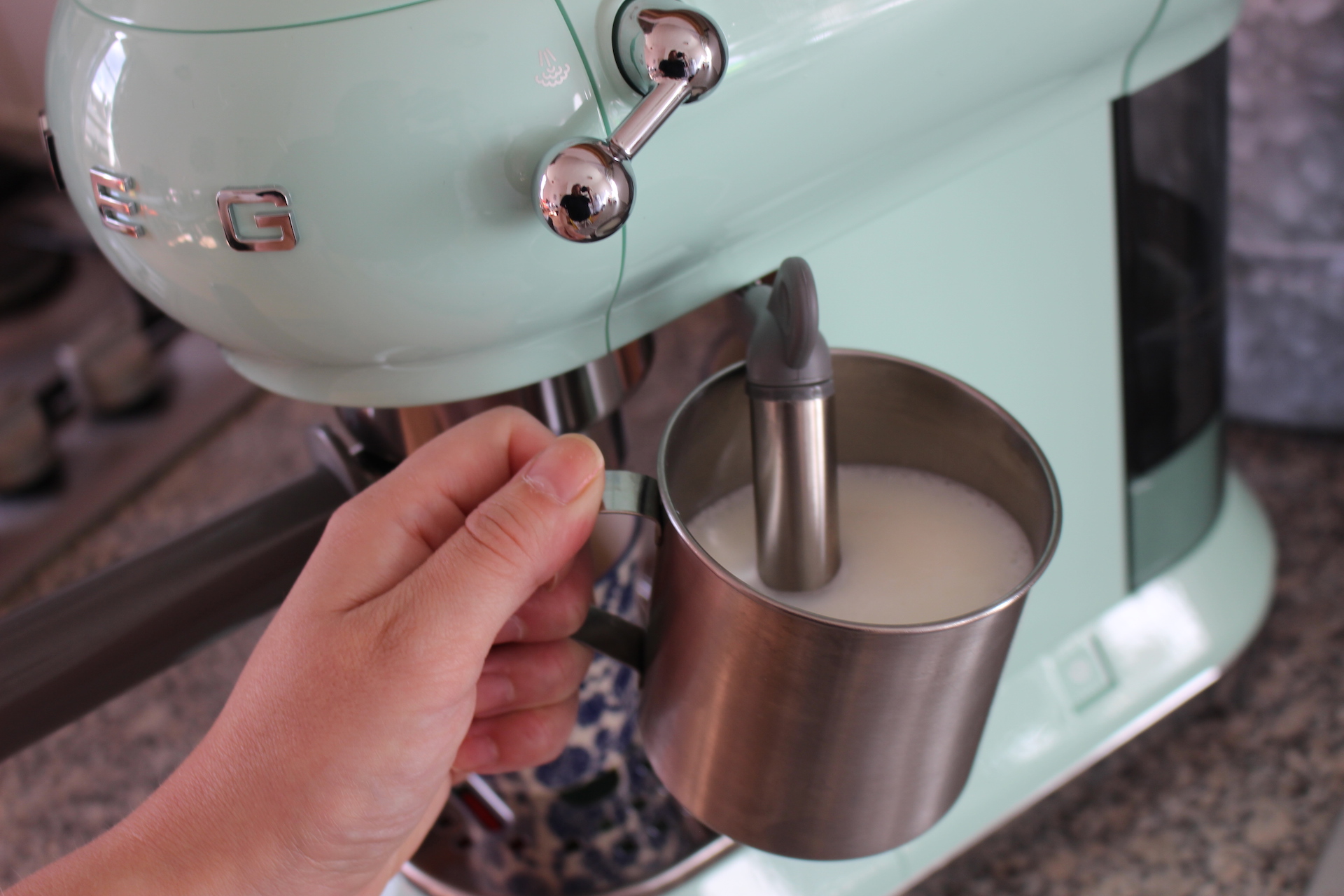
How we tested these espresso machines
We take testing espresso machines seriously and put each device through its paces to see if it can live up to its promises. We assess the quality of espresso produced by each machine, analyzing the flavor of the final drink; we look for a rich, intense shot of coffee that doesn’t taste bitter or burnt, along with a thick, stable crema that reforms after the sugar has been sprinkled on it.
The temperature of the espresso is also measured, checking for consistency from one cup to another, and we assess the noise level of the machine. If it has a built-in steam wand, we evaluate its ability to texturize both dairy and plant-based milk, looking for tiny bubbles that create a rich, smooth texture. Again, we assess whether its noise level is acceptable.
We also evaluate how easy an espresso machine is to set up and use, whether it offers enough manual control for those who want to take on the barista role, plus how much space it will take up on your kitchen counter. Finally, we consider if the water tank is removable for easy refills and how the machine looks.
Espresso machine FAQs
How do I make an espresso?
Espresso is made by passing water at high pressure through compacted ground coffee.
However, a set ‘recipe’, which usually refers to a ratio and brewing duration, is generally given by the roaster (the brands that roast and blend coffee beans). The most common recipe is 1:2 in 25 to 35 seconds, effectively turning each gram of ground coffee into 2g of liquid espresso in that period.
How compacted the ground coffee is will affect how quickly or slowly the espresso brews. If the coffee is too tightly packed, it will take longer to brew and be too strong; loosely compacted coffee means it will be dispensed too quickly and subsequently weak. Prefer a cappuccino, latte, or a flat white? Find out how to make your favorite coffee in our article.
If you'd like expert advice on making coffee-shop-worthy drinks at home, we have some great tips and tricks for you – and while you're at it, check out our guide to the game-changing coffee maker trick that will ensure you never drink bitter espresso again.
How is an espresso machine different from a coffee machine?
An espresso machine differs from other coffee machines because it uses pressurized hot water passed through a disc of compacted coffee grounds called a puck. It's possible to adjust the volume of water passed through the grounds and how tightly packed the coffee is to change the strength of the hot drink brewed.
Single-serve coffee machines, or pod coffee machines as they're sometimes known, still use pressurized hot water, but the coffee is contained in a capsule or pod. The coffee machine punctures the capsule several times to allow the water to flow through the coffee ground to brew the drink. However, while some single-serve coffee machines let you adjust how much water is used to create different volumes of coffee, it's impossible to tweak how compacted the grounds are.
Finally, drip coffee makers pass hot water through compacted coffee grounds. As a result, it's not at the same pressure as when using an espresso machine, and there's no set volume of water used. Instead, the brewing takes place until the water tank runs dry or the coffee maker is switched off. This creates a more traditional filter coffee rather than espresso.
- You've reached the end of the page. Jump back up to the top ^
Sign up for breaking news, reviews, opinion, top tech deals, and more.

Cat is TechRadar's Homes Editor specializing in kitchen appliances and smart home technology. She's been a tech journalist for 15 years, having worked on print magazines including PC Plus and PC Format, and is a Speciality Coffee Association (SCA) certified barista. Whether you want to invest in some smart lights or pick up a new espresso machine, she's the right person to help.